


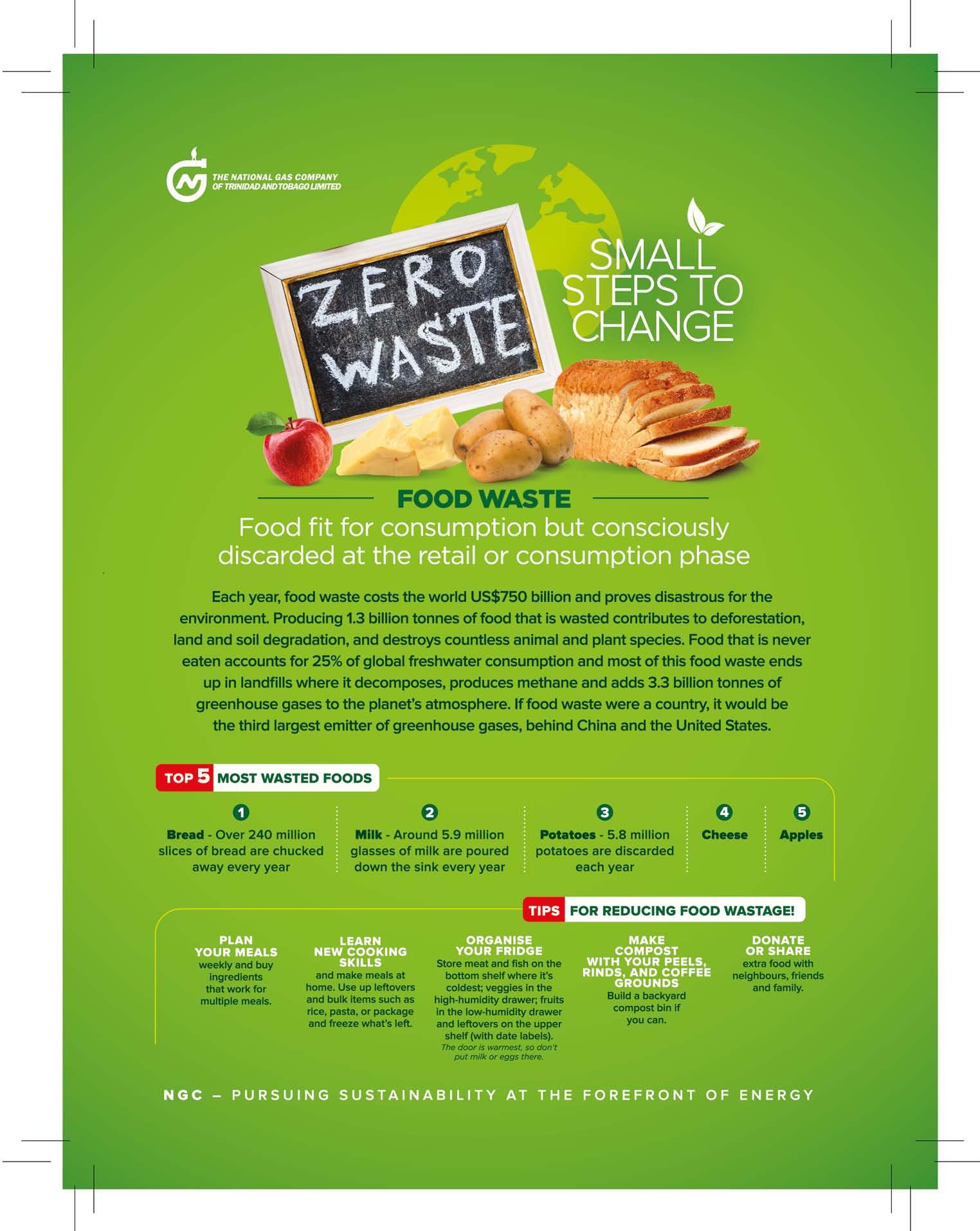


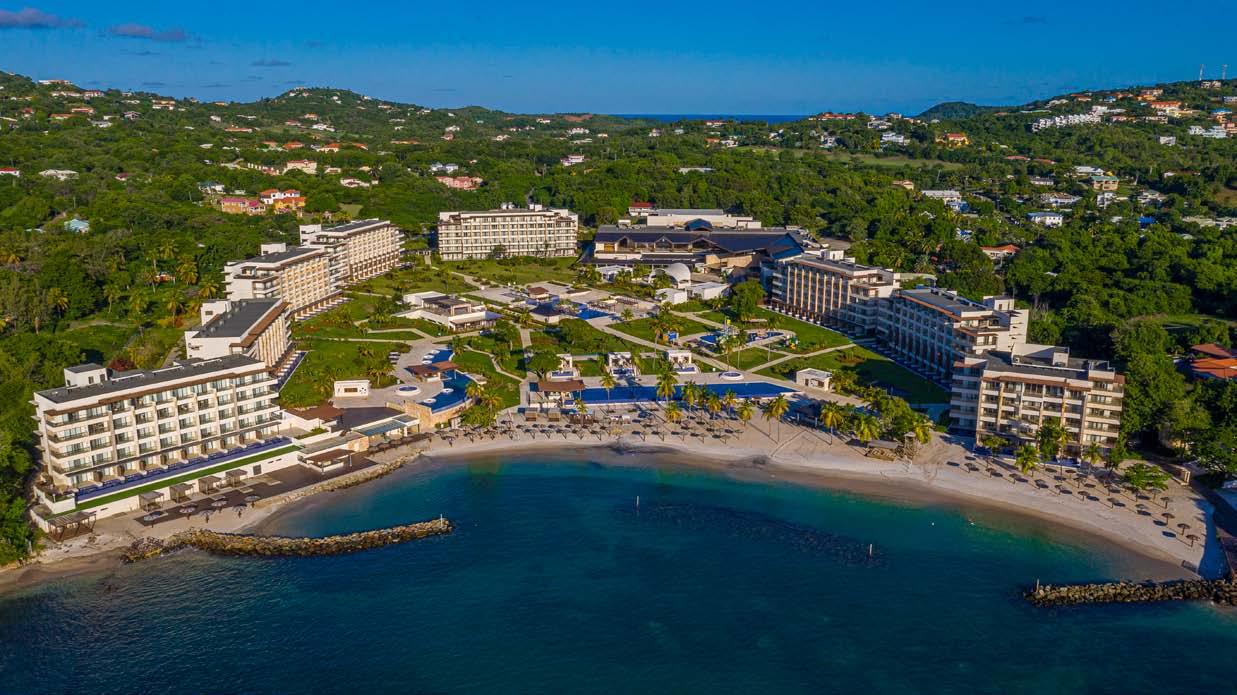

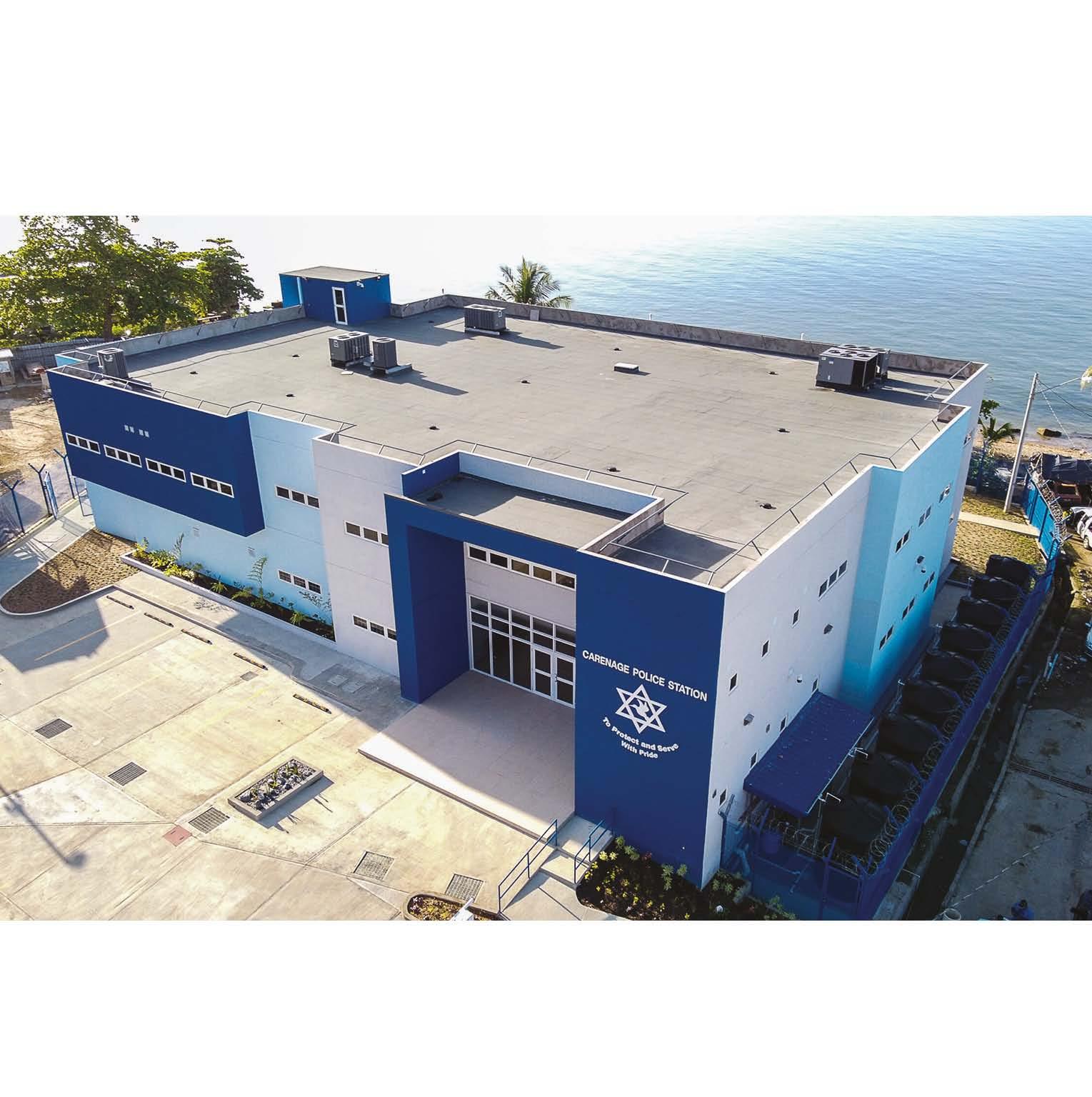









We’re almost halfway through 2023 and it’s been a very encouraging year so far. Following the introduction of Welcome Home, we are ready to launch the first of the three elements of this campaign.
Part one will focus on improving connectivity to ensure that more of you can get “home”, whether you live within or outside of the region.
The second and third parts will concentrate on consistent attention to passengers, and leveraging our Caribbean culture to embolden the region’s image globally.
Caribbean Airlines currently has the most comprehensive route network in the Caribbean. And as we move forward, we will bring back some of your favourite destinations, increase flights to some existing ones, and add new services, as we reinforce our position as the Caribbean’s leading airline. We also intend to increase frequency to various points and design the commercial schedule to enable more convenient and seamless options for travellers.
We recognise that air transport is a main pillar of Caribbean connectivity — critical to facilitating trade, investment, and the movement of people. Thanks to our growing network, fleet size and other factors, Caribbean Airlines is uniquely positioned to capture regional travel demand. It also represents a significant competitive advantage for our company, and another reason
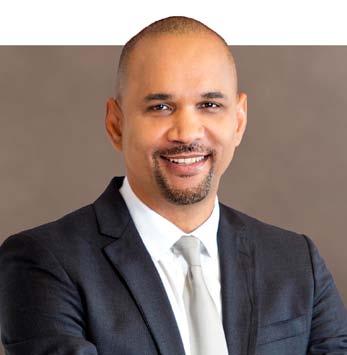
A Message from our CEO
for business and leisure customers to choose Caribbean Airlines.

For us, improving connectivity is a strategy long in the making, and we have carefully planned for this expansion — using data and other research to guide our decisions. Our network growth will also be supported by our investment in four new ATRs, which will help accelerate our fleet modernisation and growth strategy. We also plan to hold further discussions with key stakeholders to refine a mutually beneficial way forward for all parties.
Caribbean Airlines is a uniquely unifying force in the region. It is this that inspired the Welcome Home theme, emphasising the privilege we have to bring the Caribbean and diaspora together.
We are on a mission to provide an unrivalled network that connects the entire Caribbean region; promotes culture and tourism; and strengthens our Caribbean identity. You will hear more about this in the months ahead as we connect even more of you with each other and with home.
We are also actively forging alliances and strategic agreements with industry partners to give customers more options, and to enhance their travel experience. In the coming months, we will roll out an upgraded Caribbean Miles loyalty programme, which will enable you to earn miles in new ways.
For now, you can take advantage of Accelerate Anything a dynamic loyalty rewards solution in collaboration with our partner Points, a Plusgrade company. The product gives Caribbean Miles members the option to accelerate their miles balance and reach their reward goals sooner. Using Accelerate Anything, members can multiply miles earned from flying or other Caribbean Miles transactions by up to five times their value, or up to 100,000 miles per transaction.
For qualifying members, it’s easy to participate. For miles to be eligible for use in the Accelerate Anything programme, the miles must have been earned within a consecutive three-month period. For example, miles earned in March, April and May can be accelerated in June. Conditions and annual limits apply, so visit our website and social media platforms for more details.
When I look at the trajectory of our company, I know there are exciting times ahead. Your support is integral to our success, and we thank you for your continued belief in the Caribbean Airlines brand!
Regards, Garvin

Caribbean Airlines
No. 176 • May/June 2023
12 EvEnt buzz Festivals and events around the region
20 Music & book buzz
Reviews by Nigel A Campbell and Shivanee N Ramlochan
24 snapshot
The boy from barbados
At just 19, Barbadian race car driver Zane Maloney has already become an international sensation. ShellyAnn Inniss takes a look at his journey — and prospects

28 own words
“There was a longing To be useful”
Renee Robinson on her work in the international film industry and as Jamaica’s film commissioner, and the great opportunities she sees for Caribbean film — as told to Caroline Taylor
32 backstory
Caribbean moTher
Tongues
Dr Jo-Anne Ferreira explores the more than 70 languages (many of
them Creole or Indigenous) we speak and sign in the Caribbean, and why valuing and preserving them is so crucial
36 closEup
The musiCal Children of The diaspora
From Caribbean-born superstars to innovative artists with Caribbean roots, Nigel A Campbell looks at the region’s lasting impact on the global music industry — 50 years after the birth of hip-hop
40 round trip
where pasT and presenT Converge
Shelly-Ann Inniss introduces five more Caribbean World Heritage Sites

50 layovEr
sT John’s, anTigua
Our guide to exploring Antigua — an important hub for Caribbean travel — when time is tight
52 GrEEn
Can your vaCaTion go green?
Racquel Moses of Island Innovation
shows how, and why sustainable tourism is so important to the Caribbean

54 on this day
The Caribbean Cane and abel
St Kitts, 1623: Thomas Warner establishes the first English colonial settlement in the Caribbean. His legacy of conflict would spill over into Antigua and Dominica — and to his sons. James Ferguson learns more
56 puzzlEs & brain tEasErs
64 classic
From Caribbean Beat ’s archives: Caroline Taylor gets homesick for her Tantie’s macaroni pie, but tries to make it “healthy” … Look trouble now!
6 WWW.CARIBBEAN-BEAT.COM
Contents
40
52 24
Read and save issues of Caribbean Beat on your smartphone, tablet, computer, and favourite digital devices!

Beat Beat Caribbean Caribbean
An MEP publication
Editor Caroline Taylor
Designer Kevon Webster
Editorial assistant Shelly-Ann Inniss
Production manager Jacqueline Smith
Finance director Joanne Mendes
Publisher Jeremy Taylor
Business development consultant Halcyon Salazar
Business Development Manager, Tobago and International Evelyn Chung
T: (868) 684–4409
E: evelyn@meppublishers.com
Business Development Representative, Trinidad Tracy Farrag
T: (868) 318–1996

E: tracy@meppublishers.com
Media & Editorial Projects Ltd.

6 Prospect Avenue, Long Circular, Maraval 120111, Trinidad and Tobago
T: (868) 622–3821/6138
E: caribbean-beat@meppublishers.com
Websites: meppublishers.com • caribbean-beat.com

Caribbean Beat is published six times a year for Caribbean Airlines by Media & Editorial Projects Ltd. It is also available on subscription. Copyright © Caribbean Airlines 2023. All rights reserved. ISSN 1680–6158. No part of this magazine may be reproduced in any form whatsoever without the written permission of the publisher. MEP accepts no responsibility for content supplied by our advertisers. The views of the advertisers are theirs and do not represent MEP in any way.
Website: www.caribbean-airlines.com




7 WWW.CARIBBEAN-AIRLINES.COM
Cover Front and back covers provided by Caribbean Airlines
Printed by SCRIP-J, Trinidad and Tobago



Connecting the Caribbean
A Messag from our CEO
The Caribbean is home to some of the most captivating scenery on the planet. From volcanic mountains and verdant rainforests to tumbling waterfalls and miles of stunning shoreline, we have it all.
Last year I began hosting Caribbean Connections — the Caribbean Airlines Thought Leadership Series, where we chat with regional leaders to hear the stories of how they achieved success and their perspectives on issues impacting the region.
So far, my guests have included leading personalities like Adam Stewart (Executive Chairman of Sandals Resorts); Gerry Brooks (Professor of Practice, the University of the West Indies, and retired Group COO of ANSA McAL); Joy Jibrilu (the first female and first Bahamian CEO of the National Paradise Island Promotion Board); Marlene Street Forrest (Managing Director of the Jamaica Stock Exchange); Robert Badal (businessman and Group CEO of the Pegasus Hotel, Guyana); Karen Darbasie (CEO of First Citizens Bank); Langston Roach (founder of the LRI Group of Companies); Dominic Hadeed (owner of Blue Waters Ltd); Anthony Ali (CEO of Goddard Enterprises Ltd); and Colin Soo Ping Chow (consultant and former Executive Chairman of EY Caribbean).
The discussions have been thought-provoking and give a bird’s eye view of these individuals’ journeys and the evolution of their careers. Interestingly, there were several common factors among their experiences, not least of which was the importance of continuous learning, consciously setting goals (and having the discipline and determination to see them through), keeping an open mind, and giving back.
When asked to speak on the Caribbean, they have all overwhelming expressed how much potential they believe the region possesses. To steal a phrase from the sagacious Sunity Maharaj, they see us as “molecules of possibility”
Our diversity, cuisine, climate, and landscape make the Caribbean a coveted getaway for travellers. Brilliant white sand fringed by turquoise water, dramatically contrasted by the alluring sparkle of black sand, colourful coral reefs and laid-back people make our region the perfect antidote to overbearingly hectic lifestyles.
It’s no surprise that tourism is a major contributor to regional economies. And while the pandemic dealt a severe blow, tourism is making a strong comeback.
According to data from the World Tourism Organisation (UNWTO), approximately 917 million tourists travelled internationally in 2022. And the Caribbean had one of the quickest recovery rates, with 28.3 million registered tourist visits in 2022.
Beyond tourism, we have innate creativity, intellectual prowess, and physical ability which manifests in the splendour of our celebrations, contributions to international research and academia, and global success in sport.
This melting pot of ethnicities living in relative peace and harmony provides a working model of the adage “live and let live”. In fact, I would say that the Caribbean is HOME to one and all. By virtue of the blend of cultures, everyone can find a place here.
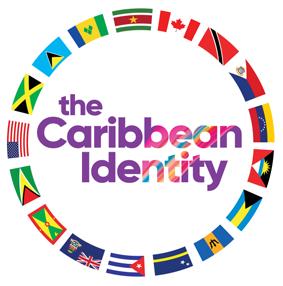
Now, if we can just move beyond the entrapment of “ego tourism”, and come together — not as competitors, but as collaborators — to iron out pain points regarding ease and affordability of movement, I am confident that we can successfully harness our resources to position the region as the leading destination in the world.

Caribbean Airlines recognises its role as a unifying force, and through initiatives like Caribbean Connections, expanding our route network, and supporting regional celebrations, we’re executing the mandate set out decades ago by the first generation of post-colonial Caribbean leaders — to integrate and promote oneness across this magical archipelago.
Join the conversation by checking out Caribbean Connections on YouTube, LinkedIn, and as part of our in-flight entertainment under the sub-heading Caribbean TV within the main TV folder.
Dionne Ligoure is the Head of Corporate Communications at Caribbean Airlines Limited, and a Caribbean citizen to her core. Email: dionne.ligoure@caribbean-airlines.com
Caribbean Airlines #REcalibrated
Tobago’s roads less travelled
You can understand why few visitors venture beyond Tobago’s southwest. Everything you could want is in easy reach: the airport, great food, wonderful ocean escapes, thrilling eco adventures, and idyllic beaches along the picture-perfect Caribbean coast. But there’s a world to explore further afield, starting with the capital Scarborough — over which Fort King George stands guard while offering magnificent views in every direction. Even fewer visitors take the drive up Tobago’s rugged Atlantic coast (pictured here as the sun rises over Scarborough), and discover the wonders of northern towns like Speyside and Charlotteville. But it’s well worth it — especially if you love diving, snorkelling, beautiful beaches, and delectable food … all far from the madding crowd!

10 WWW.CARIBBEAN-BEAT.COM
C h RI s A n DER son
wish you were here

WWW.CARIBBEAN-AIRLINES.COM 11
Essential info about what’s happening across the region in May and June!
Don’t miss
Grenada’s Chocolate Festival (16–21 May) is a chocolate lover’s dreamland. Almost all the cocoa produced here ranks among the best in the world, and all the Spice Island’s main cocoa and chocolate producers participate in the festival. You can walk or dance the cocoa to help ensure the beans dry evenly; explore cocoa farms; make your own chocolate from tree to bar; discover the joy of chocolate-themed dinners and parties; and learn about the health benefits of chocolate via hands-on workshops, meditation sessions and beauty treatments. Make sure to visit the House of Chocolate (museum and emporium) too. But the best gift or souvenir you can take away may just be the chocolate bar you expertly made at the festival — once you don’t devour it before you return home!

WWW.CARIBBEAN-BEAT.COM 12
sEA W A v E / s hu TTER s T o C k. C o M
event buzz


The entire month of May is extra special in Dominica. For the first three Saturdays, all eyes — and feet — are on its renowned hiking trails for hike Fest Are you up for the challenge of the Waitukubuli National Trail (approximately 115 miles from the northern to southern end of Dominica)? Or maybe you’d like to tackle the Morne Trois Pitons National Park? And while you’re in the Nature Isle, enjoy DoMFEsTA, which features the national song competition,
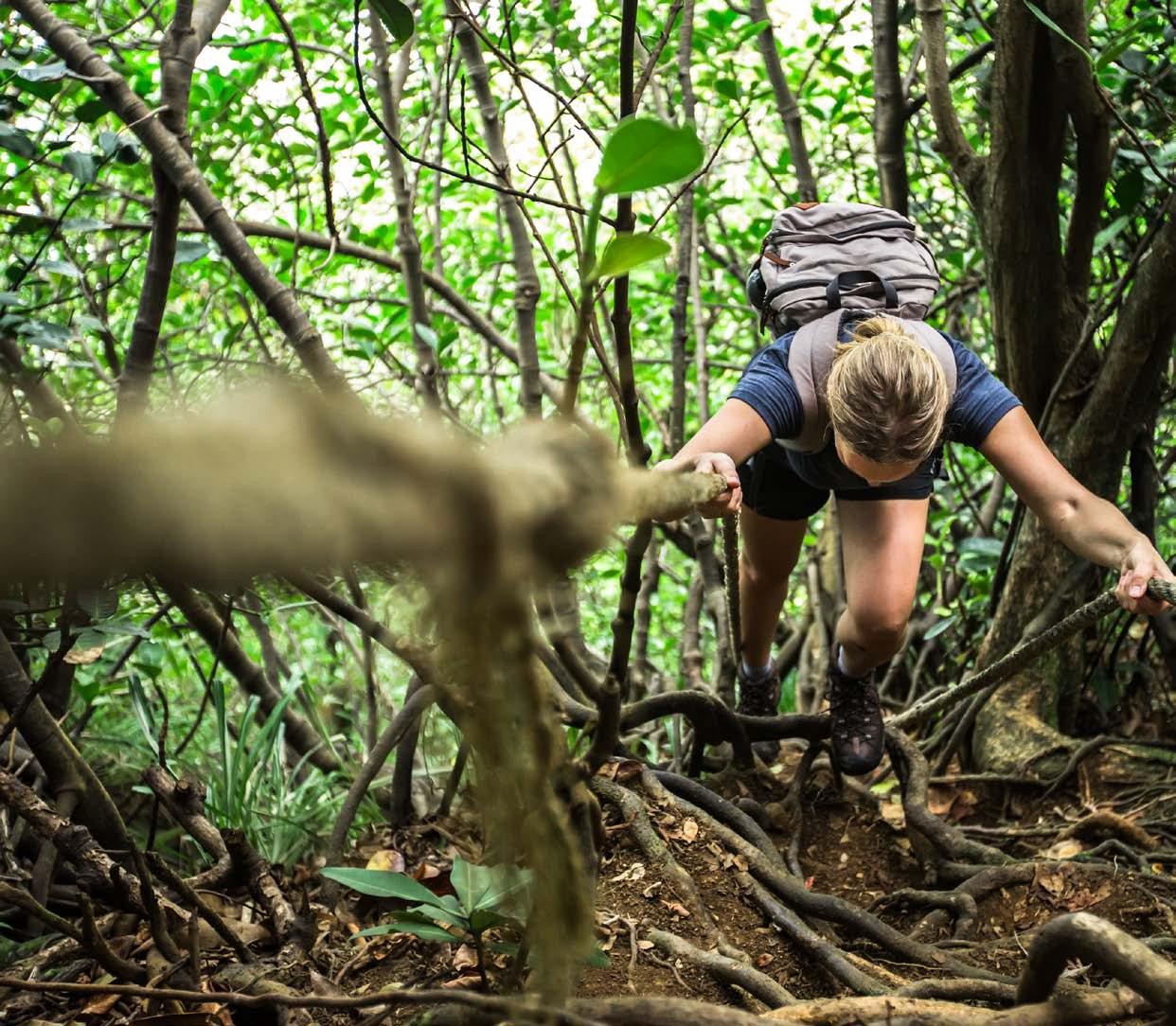
art exhibitions, drama, theatrical performances, and more.
St Lucia’s creative industries connect in a splendid showcase at st Lucia’s Jazz & Arts Festival (5–14 May).
Now in its 30th year, it kicks off with Shenseea and Kes the Band, followed by a stellar line-up including Buju Banton, Bunji Garlin, Fay-Ann Lyons, Rema, Ayra Starr, CKay, Kizz Daniel, and pianist and composer Gustavo Casenave.
WWW.CARIBBEAN-BEAT.COM 14 Cou RTE sy D s C ov ER Do MI n ICA Au T ho RIT y event buzz
What do Restaurant Week (7–21 May) and a sport Fishing Tournament (27–28 May) have in common? The energising atmosphere and hospitality of idyllic Antigua, of course — and copious amounts of seafood!

Thousands of enthusiastic revellers, stilt-walkers, acrobats and limbo dancers parade through the streets to soca music at Cayman Carnival Batabano (6 May). Batabano (pronounced BAH-tuhbuh-nu) refers to the tracks left in the
sand by sea turtles as they crawl onto the beach to nest — a nod to Cayman’s commitment to turtle conservation. The following week, indulge yourself at the Taste of Cayman Food & Drink Festival (13 May).
Fearless mountain bikers complete thrilling circuits at the Tobago M2B Madness (6–7 May). Seek out the best vantage points to take in the action while enjoying the event’s festive, family-friendly energy.

Carnival chasers, soca fanatics, staunch fete attendees. Hear ye, hear ye! More fun, rhythm, and vibes await at The Bahamas Carnival (18–21 May), Barbuda Caribana (29 May–2 June), and St Vincent’s vincy Mas (30 June–11 July)!
The Barbados Celtic Festival (18–21 May) reconnects Bajans with their rich Celtic history through food and music. World Solo Piping Champion Roddy MacLeod (MBE) will dazzle audiences alongside other pipers and drummers in the signature massed band parade.
Take in diverse literary voices — some with roots in Jamaica and others from around the world — as Jamaica’s Calabash Literary Festival returns (26–28 May). Readings highlighting outstanding literary work have brought talents like Edwidge Danticat, Kei Miller, Marlon James, Caryl Phillips, and Linton Kwesi Johnson to the festival’s thatch-covered stage overlooking the Caribbean Sea.
15 WWW.CARIBBEAN-AIRLINES.COM
Cou R tesy Antigu A & B ARB ud A t ou R ism Autho R ity event buzz
Enjoy historical re-enactments, performances, edutainment, and delicious Indian cuisine as communities commemorate the arrival — starting in the 1830s — of indentured immigrants from India to the region during Arrival Day celebrations in Guyana (5 May), Trinidad & Tobago (30 May), and Suriname (5 June).

Diving in Grenada, the “shipwreck capital of the Caribbean”, is extraordinary and the Grenada Dive & Conservation Festival (29 May–5 June) also presents a wonderful opportunity to engage in conservation conversations. You can also learn about Grenada’s artificial and coral reef projects, participate in turtle-watching and lionfish hunting, plus volunteer for a beach clean-up — all leading up to World Environment Day (5 June).
Eleuthera Pineapple Festival (2–3 June) showcases its most commonlyknown produce. There will be live local Bahamian entertainment, dishes made with pineapple, and plenty more keeping tastebuds satisfied.
T&T Bioblitz (3–4 June) returns to Tobago for its first in-person event since the pandemic began, taking important surveys of the island’s rich marine biodiversity in areas like Store Bay, Pigeon Point, Bon Accord, and Mt Irvine.
Curaçao Pride (7–12 June) features parties and a range of activities celebrating the LGBTQIA community.

16 WWW.CARIBBEAN-BEAT.COM s h AI kh M ERAJ / s hu TTER s T o C k. C o M
Cou R tesy F R og F ish W R e C k d iving event buzz








Tobago Properties For Sale Call or WhatsApp (868) 620-4382 / (868) 302-5849 Shazim Ali – Property Developer 5 Bedrooms – Ocean Front TT$2.7m Crown Point 3 Bedroom Condos – TT$1.65m 2 Bedroom Condos – TT$1.35m Shirvan Road
Feed your need for speed at Rally Barbados (10–11 June). Top local race car drivers like Zane Maloney (Barbados) and international drivers like Haydon Paddon (New Zealand) stir up some dust in challenging public road and off-road courses.

Tobago’s Rainbow Cup Tobago (10 June) features a sprint distance triathlon, an Olympic distance triathlon, and many other events such as a 5k run, team relay triathlon, and kids triathlon.

An impressive roster of stars and legends from several genres are set to perform at the st kitts Music Festival (22–24 June) in a magical music extravaganza.
Linden, the second largest city in Guyana, is the only town where a main river (the Demerara) passes through — dividing the town in half. A wide array of family-oriented sporting, religious and entertainment activities during the Linden Riverfront Festival (30 June–3 July) offer a peek at its aqua-tourism potential.
WWW.CARIBBEAN-BEAT.COM 18 Cou R tesy R A lly B ARBA dos event buzz Cou R tesy R A in B o W W ARR io R s tR i A thlon Clu B
Event previews by Shelly-Ann Inniss
beyond ordinary...

Tobago’s unique cultural history means it’s a real mixing pot of flavours including African, Asian, Creole and European delicacies – a journey around the world for your palate. Get your taste buds jumping with curried crab and dumplings or sample the freshest catch of the day. Join us at one of the island’s many lively festivals and events. In Tobago we’re happy to share our proud heritage with you.



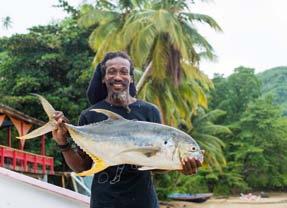
#101ReasonsTobago
You can find out more at TobagoBeyond.com or scan the code below.
This month’s listening picks from the Caribbean
 Reviews by nigel A Campbell
Reviews by nigel A Campbell
One result of migration, forced and voluntary, is a blossoming of new music cultures. On his new album Traces — a limited edition in both vinyl and CD — Trinidadian jazz musician Etienne Charles continues his exposition of “New World” stories through music genres born where disparate peoples meet. Charles finds catalysts for composition in his colleagues’ origins. Performed here by a stellar quartet — each member with a different birthplace — playing cello, cuatro, double bass and trumpet, this album’s music reflects their individual cultures and traditions. Antillean waltzes and biguine from the Caribbean, festejo, merengue, joropo and choro from South America all provide sonic connections to tales, tributes and the legacies that define an expansive Creole soul. Charles the musician is the fortunate traveller who gloriously and majestically adds to his oeuvre by mining his African sojourns, his Latin American expeditions, and his Caribbean recollections and discoveries.
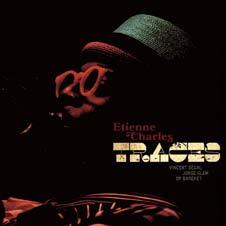
Cozier Neverland (Spooky Cozier)

In the Caribbean, a new generation of music producers is working towards making music that “crosses over” to a global market — with a sound that speaks its native language, yet incorporates supremely popular international dance elements. Hints of hip-hop have done wonders for reggaeton, Afrobeats, even dancehall. Cozier is one such producer who is finessing and pushing the rapso-dancehall-soca-R&B fusion genre called Trinibad towards an accessible entry point. Neverland, his first album, has the earmarks of a pioneering signpost for what the genre can do. A chill hip-hop vibe permeates the music so that the chatting and wordplay are not obscured by energetic beats. Vernacular lyrics and taboo topics delight as singers and rappers slur and speechify, bringing a unique youthful perspective of contemporary island life to the forefront. This album mirrors the calypso ethos and aesthetic — the lyrical exposition of an island reality — in a brand new way.
David Walters is a Francebased singer-songwriter, producer and DJ with roots in St Kitts and Martinique; he trades that heritage to success beyond the Antilles. Walters’ new album Soul Tropical conjures up two ideas that define how music from the Caribbean can be sold to a global audience: as a multi-lingual selection of conscious and poetic lyrics set to AfroCaribbean rhythms, and as a melange of Afro-diasporic musical tropes and urgent electronic beats with allusions to what’s cool in temperate climates. Both work here and make this album a standout in the modern interpretation of an island music renaissance that is centred in the French Antilles. The tropical soul is in a celebratory mode. The Kwéyòl language — sung over zouk, biguine, soca, and even a disco vibe — works together with contemplative rap and spoken word, in both French and English, and broadens the listener’s understanding of Caribbean life and emotions.

Haitian Érol Josué is one of the world’s best known and most highly respected experts on Vodou, and is currently the country’s Director General of the National Bureau of Ethnology. With Josué’s album Pelerinaj (meaning pilgrimage), listeners will be in for a revelation that dispels the myths, biases, and ill-informed ideas of what Vodou music and spirituality are about. An eclectic and innovative blend of contemporary jazz, Kreyòl folk and sacred songs, improvisation, and electronic pop pepper the 17 tracks on this album. Josué says, I’m presenting a way of life using sacred and secular language. Even though these songs were composed for musicians to play, not for use in rituals, they represent spiritual knowledge. With a voice that carries the spirit of ancestors and the timbre of triumph, this music transcribes his Homeric journey to the centre, and the rekindling of a joyful healing and determined peace.
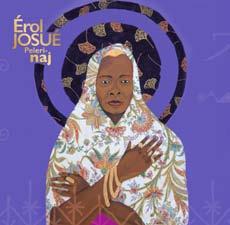
WWW.CARIBBEAN-BEAT.COM 20 music buzz
etienne Charles Traces (Culture Shock Music)
david walters
Soul Tropical (Heavenly Sweetness)
Érol Josué Pelerinaj (Village Hut Records)
This month’s reading picks from the Caribbean
 Reviews by shivanee Ramlochan, Book Review Editor
Reviews by shivanee Ramlochan, Book Review Editor
hungry ghosts
 by Kevin Jared Hosein (Bloomsbury, 352 pp,
by Kevin Jared Hosein (Bloomsbury, 352 pp,
ISBN 9781526644480)
In the brutal, unforgiving world of Kevin Jared Hosein’s sophomore novel for adults, images of biological retribution abound. One unsettling metaphor for violent twins likens them to carrion, feasting on the fleshy remainders of overseers. 1940s Trinidad leaps uncompromisingly from the pages in Hosein’s ornately hammered prose; this is a tale of two lineages with no easy victories and no peaceful deaths. The author, winner of the 2018 Commonwealth Short Story Prize, has taken narrative pains to present an emotional ecosystem that not only feeds on loss, but thrives on sorrow. When the stalks of the cane fields rustle in Hungry Ghosts, the reader can sense menace rippling through the air; this novel’s heart balefully bleeds. The tussle for power and position between two Indo-Trinidadian families, the Changoors and the Saroops, reads magnificently like Chekhov brined in Caroni puncheon rum.
The adventures of a black edwardian intellectual
by Pamela Roberts (Signal
Books, 316 pp, ISBN 9781838463069)

Born in Antigua in 1873, James Arthur Harley left those shores propelled by the clarion call of that great social redeemer: education. A scholar at Howard, Harvard, Yale, and Oxford universities, an ambitious polymath, Harley’s accomplishments are all the more hard-won because they were earned during one of racism’s most productive ages. In this first full-length study of Harley’s life, biographer and fellow Antiguan Pamela Roberts constructs a complex, illuminating architecture, never adulatory in its focus. Exploring the intersections of Harley’s mixed-race Caribbeanness with his intellectual prowess, Roberts pinpoints the acute pressures facing Black excellence in Jim Crow America and institutionally racist Oxford. Some 80 years after James Arthur Harley’s passing, this book is the chronicle of not only one extraordinary life, but a movement of unassailable Black scholarship.
The animated universe by Samantha Thornhill (Peepal Tree Press, 72 pp, ISBN 9781845235383)

Today I throw up prayers, double helix my locs into Bantu knots / and tighten the laces on my winged Tims preparing to elevate. In prophetic urban odes, Samantha Thornhill’s first book of poems assembles hurricanes, rebellions, and the heartbeats of sojourners, homeward bound. Trinidadian Thornhill’s years of experience in crafting poems shines through in these spiritually affixed offerings. Drawing from the deep wells of Black American and Caribbean legacies, The Animated Universe is at once cosmic and community-oriented in scope. Here, the voices of the ancestral departed are afforded as much ceremony as the concerns of the living. Elegies for comrades destined to be remembered align with a poem in the imagined voice of Kunta Kinte, addressing the incarcerated whale Shamu in heart-wrenching solidarity. The poet’s gestures are inclusive at every verse, redemptive and triumphant.
where dogs bark with Their Tails by Estelle-Sarah Bulle (Farrar, Straus and Giroux, 304 pp, ISBN 9780374289096)
Told by the overlapping tongues of the Ezechiel clan, Where Dogs Bark with Their Tails is a prismatic longing for the homeland of Guadeloupe and the tiny, verdant village of Morne-Galant. Translated from the French by Julia Grawemeyer, the central figure of the novel is the island: the Ezechiels orbit it like restless moths, by turns repulsed by and relentlessly drawn to its quotidian mysteries. Bulle, of Guadeloupean and FrancoBelgian parentage, conjures confessional passages across the four narrators’ accounts in which to explore créolité. Each family member, from resplendent matriarch Antoine to her Parisianborn successor, “the niece”, contends with the emotional implications of their mixed-race identity; acts of unmooring and resettling wend through the novel with fervency. A contemplative tale of dynasty, this marks an eagerly welcome addition to French Caribbean literature in translation.

21 WWW.CARIBBEAN-AIRLINES.COM
book buzz
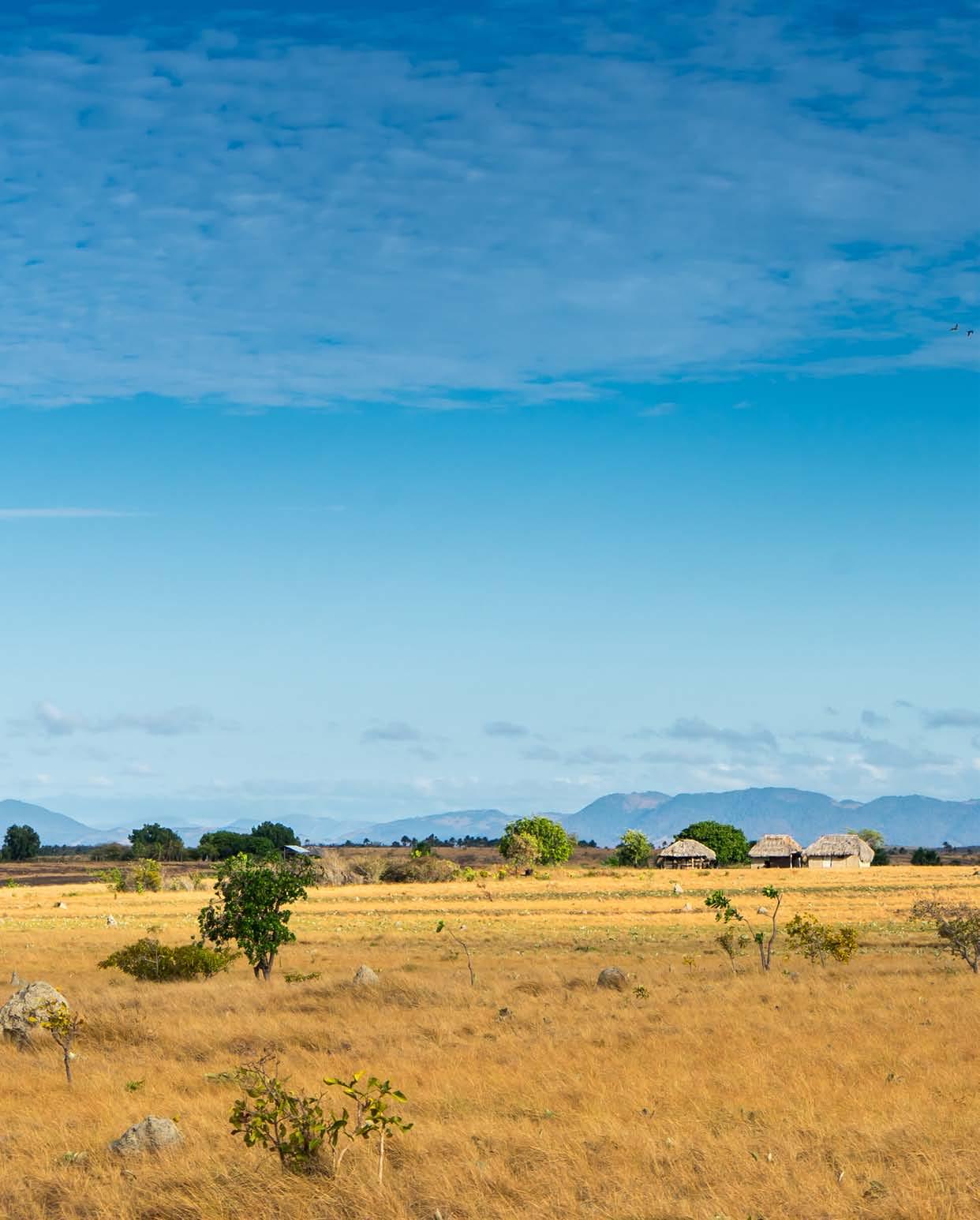
22 WWW.CARIBBEAN-BEAT.COM G AIL Johnson/ s hu TTER s T o C k. C o M bucket list
y u P uk ARI , GuyA n A
Butterflies playfully chase each other in the rolling hills of the central Rupununi savannahs. And birdsong from rare birds, high-pitched grunts from anteaters and other sounds of nature strike up a symphony here in Yupukari — the village of the indigenous Macushi and Wapishana peoples. Nestled between the Kanuku and Pakaraima mountain ranges, there are myriad opportunities to witness some of the most intriguing wildlife. This village is home to the Caiman House Field Station, a conservation centre for the black caimans and the yellow-spotted river turtles found in surrounding lakes and the Rupununi River. Accessible through Lethem, local guides will enrich your experience of Yupukari — and neighbouring areas.

23 WWW.CARIBBEAN-AIRLINES.COM
THE BOY FROM
BARBADOS
At just 19, Barbadian race car driver Zane Maloney has already become something of a sensation. shelly-Ann Inniss takes a look at his journey so far as he prepares for his first Formula Two season — and comes home to compete in Rally Barbados this June
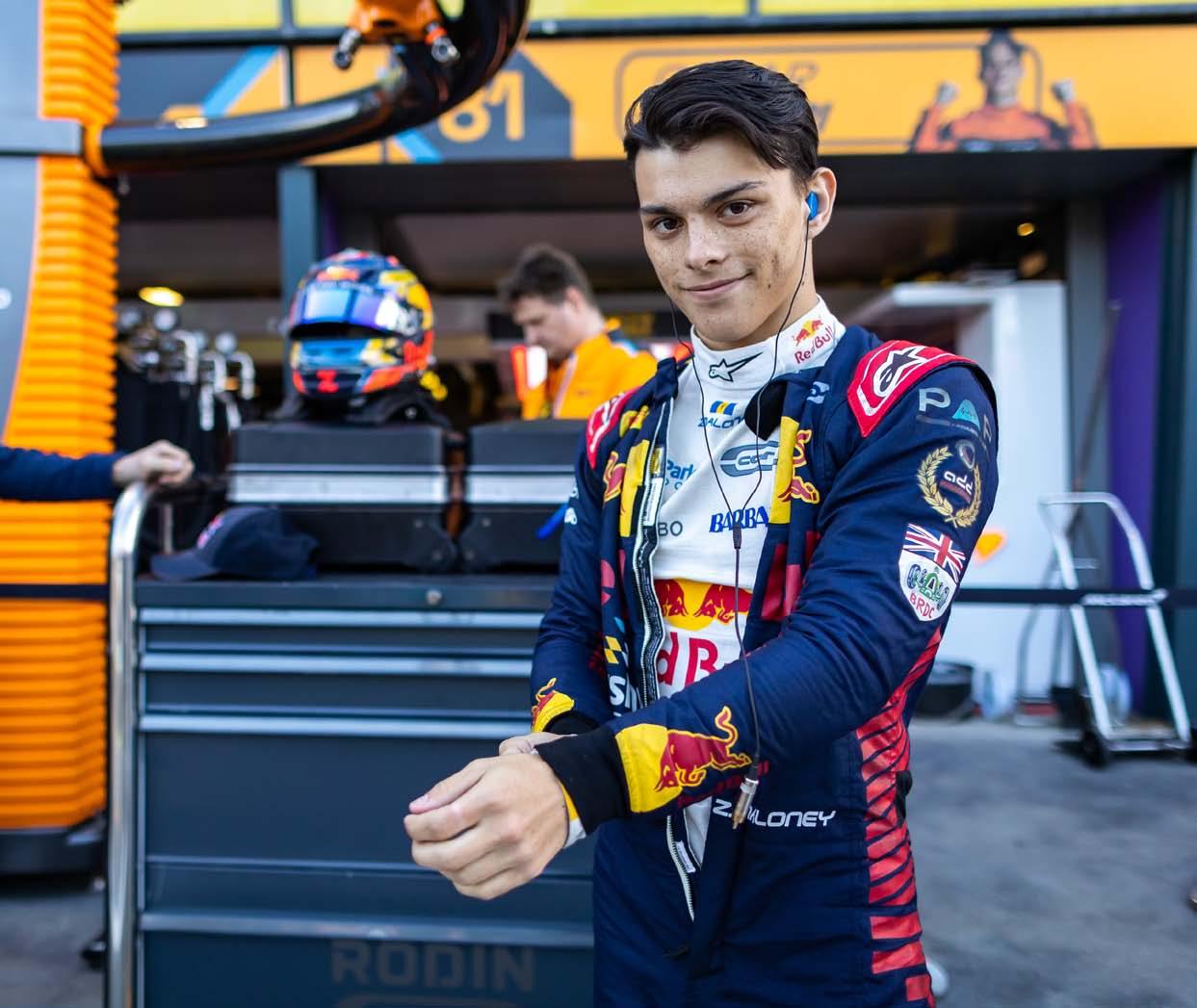
24 WWW.CARIBBEAN-BEAT.COM
© Du TC h Pho T o A GE n C y C ou RTE sy sEA n M AL on E y snapshot
The sound of sports car engines revving across the 166-square-mile island of Barbados can easily wake the average Bajan. Before the crack of dawn, carpools full of motorsport lovers form cavalcades to the best vantage points where lawn chairs, hats and coolers then come out in preparation for the action.
The latest tunes blast from speakers of parked vehicles, and smiles are exchanged as camp is set up for the race stage. The sounds of soda cans and bottle covers creaking or popping open signal the real start of the rally lime.
seater season saw him claiming 10 race wins and five further podium finishes.
“The boy from Barbados”, as he is often affectionately called, became the first driver since Jamie Caroline to win all three races in a single weekend at Oulton Park. Maloney won that championship by 20 points at the final round, ahead of Mexican Sebastián Álvarez. In the process, he became the first Barbadian racing driver to win a championship in Europe, and the first rookie to win the championship outright in the history of the series.
At 16, when most of his peers were officially eligible to obtain their driver’s licences, Maloney was the first Caribbean driver
Things reach a fever pitch as racers start their engines, and the smell of burnt tyres fills the air as they spin on the spot, screeching and creating clouds of smoke.
Motorsport enthusiasm in Barbados dates back to the 1930s, and the Barbados Rally Club is the oldest club on island devoted to a sport that doesn’t involve a cricket pitch or a ball!
So, dearest reader, rally fever truly exists, and it is contagious. Just ask 19-year-old Zane Maloney, who’s loved car racing from the time he was born. It seems his mission is to spread the passion for it as far and wide as possible.
“My entire family races cars, and I was karting from three years old … or just before I could walk,” he said in a Formula World TV interview.
Zane Maloney has become a household name among racing enthusiasts across the Caribbean — ever since his impressive 2019 British Formula Four Championship for Carlin (formerly Carlin Motorsport). His first single-
to be inducted into the British Racing Drivers Club Rising Stars Programme. He is also the youngest recipient of the Barbados National Sports Council’s Sports Personality Award, as well as the Barbados Olympic Association’s President’s Award.
Formula One is the highest class of open-wheel, single-seater formula racing sanctioned by the Federation of International Automobiles (FIA), while the FIA World Championship is the premier form of world racing. So, what’s the difference between the Formula Two and Formula Three cars? To put it simply: F2 cars are heavier than F3 cars and slower on most corners than F3 cars due to the weight — but there’s more power in that turbo than the F3.
With Zane’s first F2 season underway, his next major goal is to become an F1 driver by 2024 — a feat he’s capable of after showing strong consistent growth over the years.
“We put Zane wherever the toughest competition is in the world,” says his father Sean Maloney, “and every time we do that, he does well.”

25 WWW.CARIBBEAN-AIRLINES.COM
maloney during the F2 feature race ahead of the Bahrain grand Prix opposite page Zane maloney prepares for the track
© d ut C h Photo Agen C y C ou R tesy s e A n mA loney
maloney celebrates his third place finish at the 2023 FiA Formula 2 Championship on 5 march at the Bahrain international Circuit — the start of his F2 rookie season
Like every athlete, Zane wants to win every championship he enters, and he puts in the work to refine his skills — results lead to opportunities, after all. He’s part of Red Bull’s Youth Team, which may offer up a chance to push for an F1 seat.
“Red Bull has four seats in F1, and if I do the job in F2, they may put me in because they want the best drivers,” remarked Zane on Be Social Podcasts

It can be said that Red Bull’s expectations align with Zane’s expectations for himself — do the best job possible and show it on the track. And Zane’s track record shows he’s no stranger to breaking barriers, taking risks, and throwing himself in at the deep end.
After a challenging start to the 2022 FIA F3 Championship, where he drove for reigning champions Trident, Zane won the final three feature races — rocketing up from 10th in the standings to second. He finished just five points behind winner Victor Martins, and contributed to Trident Motorsport taking second place overall.
How did he do it? He focused on getting a position and not winning. “When the focus changed is when I started to win. I stayed calm and wasn’t too eager,” he recalls.
He re-joined Carlin for the 2023 campaign, which started well in Bahrain in March with a podium finish in the first feature race of the year.
And with the entire Caribbean supporting him, Zane pledges to never forget where he came from, whether or not he makes it as an F1 driver — and competes against his favourite driver Lewis Hamilton, who also has Caribbean roots. No matter what, he’ll always come back home.
And there’ll be much anticipation when this beloved son of the soil returns to compete at Rally Barbados (10–11 June) — the biggest motorsport event on the island.
Drivers, start your engines!
Get ready.
Get set… Go! n
26 WWW.CARIBBEAN-BEAT.COM
With Zane’s first F2 season underway, his next major goal is to become an F1 driver by 2024 — a feat he’s capable of after showing strong consistent growth over the years
© d ut C h Photo Agen C y C ou R tesy s e A n mA loney




“theRe WAs A
longing to be useful”
Renee Robinson on her journey through the international film industry; her ground-breaking seven-year tenure as Jamaica’s film commissioner; and the tremendous opportunities she sees for Caribbean film, if we can seize them — as told to Caroline Taylor
the time i left a few years later, i was developing pitch bibles and pitching new shows to the network. i’d been coming with her to all her important meetings, and she introduced me to all the key players. s he created a space for me to be able to grow. And that was how i got my feet wet in the film industry.
i’ve been in the film industry for almost 20 years now. My first degree is art history and art studio, and i did film and architecture at the time.
My real foray into film was when i left new York after Williams [College] and moved to toronto. i was new in the country, and someone told me there was a diversity in media conference, supported by the Canadian broadcasting Corporation.
i was a volunteer [assigned to Kit Redmond]. i decided i was gonna be the best volunteer she’d ever had. And at the end of the conference, she said to me, “You were such an amazing volunteer that if i ever have a job, i will make sure to call you.”
si x months passed. t hen i get this phone call — it’s Kit. i didn’t know this at the time, but she happened to be one of the most acclaimed, awarded and renowned executive producers in Canada. so i started working for her in a very junior assistant role. but she took me under her wing, and said come fly with me.
i started out answering the phone and getting coffee. And by
s o i’ve been on set, done producing, development work (creating financing and attaching talent); and worked with film festivals — particularly the toronto international fi lm fe stival ( t iff ), where i was their lead programmer for industry.
i did a joint MA/M bA (MA in communications and cultural policy, with a specialisation in telecom regulation; and M bA i n arts management), and am currently an international Women’s forum global l eaders fellow.
When the [Jamaica fi lm Commissioner] job became available, i was living in it aly … because Cameron ba iley, who’s from ba rbados and is the Ceo at tiff — a total mastermind — had said to me, “Renee, i know you could get your job done from anywhere in the world. so go live wherever you want and just get your job done.”
because i was getting cold! And i was just done. i’d been living in Canada for a while and feeling my spirit wasn’t being nourished. so i was living in it aly, working for tiff, basically doing spring in eu rope, summer and fall in Canada, and winter in Jamaica.

WWW.CARIBBEAN-BEAT.COM 28
Cour T esy r enee r obinson own words
My mum sent me the job ad. i knew i couldn’t have seen myself returning home if not for a job like this. i came home because i wanted to be a part of building my country. t here was a longing to be useful.
i’ve seen so many amazing projects shot in Jamaica that i feel so proud about. obviously, the return of James bond to Jamaica for its 25th edition — that was a highlight of my career.
i remember too we had beyonce and Jay-Z here during their On the Run tour — the artwork was, like, a te xas longhorn cow … it was a su nday night and i get a phone call. t he person says, “You is de flim commissioner?” t hey’re calling from the airport. And the guy says to me, “i have a dead cow here and we’re about to incinerate it.” And i was like, “Do not incinerate Jay-Z’s dead cow!”
because apparently when it had arrived, it didn’t have its health permits from the Chief Veterinary o f fice. it ’s a real threat, right? so here’s a skull used for set decoration, but needed its permits in order to leave the airport. And it was su nday, everywhere was closed, and they were gonna throw Jay-Z’s dead cow into the incinerator.
so it took a bit of processing because they’re not necessarily accustomed to having to release things for film productions. And it’s a sensitisation process with some of the sister agencies so
they can start to see — even though the film industry is not their core function — they also have a role to play to ensure this ecosystem is functioning, and that we’re grateful for their support.
t hat was really important to me from the beginning, because i looked at the lay of the land and was like, where’s our people, our training programmes, national support? o u r screen fund?

o u r guild, our industry bodies? Where are our building blocks, which i’ve seen in countless iterations in every other mature and robust film economies?
so it started with JA f tA P ropella, which i think many people across the region are familiar with now — a script-to-screen programme. but we’d never had anything like that before.
And there’s always a question about budget, right? but if this year we support five people and next year we support five people, and the year after we support five people, eventually we’re gonna have 50 films. And that was the philosophy. it ’s intended for sustainability — not as a pilot programme run for two years or three years then gets defunded, which is what happens all over the region.
so t he training is one component — and script development, producing, production financing. t hey get mentorship, and there’s marketing festival strategy, sales and distribution, market attendance. so it takes you through the full cycle. Propella is only one of several talent discovery programs i was running.

29 WWW.CARIBBEAN-AIRLINES.COM
Left A light moment at Kingston Creative Hub’s podcast studio in Jamaica
Above Robinson on stage at a UNESCO convention on small island developing states, where she spoke about using the creative sectors as a driver for growth and development opposite page Robinson with members of the Caribbean delegation at the Berlin International Film Festival and European Film Market in February
Cour T esy r enee r obinson Cour T esy r enee r obinson
editor’s note: This article has been updated since its publication to correct the spelling of Kit Redmond’s name
What we’ve done is used that as a feeder program. Propella [alumni] are now more eligible and qualified to be advanced to a different type of programme afterwards. So there’s a path. And I think that was what was transformative in developing the local ecosystem.
I also worked on the Jamaica Screen Fund for five years — the Ministry of Finance announced [its establishment in March, just before my tenure ended] … It’s now part of my legacy. It was designed to identify public sources of funding for local and co-produced content, structured in what’s called a trigger fund.
It’s literally there to pump some stimulant into the economy through the creative economy, which we know has a much larger spillover effect than most other industries. It’s like a five per cent economic multiplier. And that’s when it’s under-reported, because we don’t have proper data in the region. Culture and creativity are our competitive advantage — yet we’re treating them like they’re not our most valuable assets.
When you look at movie credits, that’s all the jobs created. And not just in production. There’s skilled labour, technical labour, and creative labour in the production process. But there’s also carpenters, construction workers, hairdressers, and persons not necessarily dedicated to the film industry, but when there is a film, they’re all scooped up and need to be on set. So I think the economic linkages are becoming a little bit clearer.
We’re at this point now where I think some of the things that need to happen are institutional shifts in the private sector. It requires individuals who understand both creative and business, and being able to implement those types of structural changes within institutions that are auxiliary to the film industry — whether it’s the banking sector, private wealth management, a fund, insurance …
Even when a project wants to come and pitch to an investor,
they often don’t have a proper deck outlining financials, comparatives with other projects of a similar size and scope ... So there’s a gap there.
I think we’re also not aware of all the avenues to find funding. So there’s work to be done there — even just creating the toolkit so people know this is how you apply for this money.
There’s a gap too in terms of sales — there’s not a single sales agent in the Caribbean. And again, these are private sector opportunities — not government. These are business and entrepreneurial opportunities. And they are the gaps that are not allowing us to advance.
This whole relationship with Netflix and Africa … They’ve designed development programmes, talent discovery programmes, partnerships with individual companies that now have first-look deals ... Everything that they produce is through Netflix.
And it’s not just Netflix. There are multiple studios, platforms, wealth management entities internationally that are keen to tap into the Caribbean region. But they need structure of access.

If we’re not creating film-friendly institutions and skilled below-the-line technical teams so productions don’t have to fly in all their electricians or set designers; and not making sure that there is in fact an ecosystem for the development of local content, then those projects are not gonna come here. They’re gonna go somewhere else. With or without the incentives.
The film industry is two things. It is attraction of big projects, and it is the development of local ecosystems, which then results in visibility, cultural branding, and cultural capital.
I’ve been the film commissioner for Jamaica, and the chair of the Caribbean association of film commissioners, and on the board for the Association of Film Commissioners International.
And what I’ve observed is you have just Jamaica, Trinidad, the Dominican Republic with enough infrastructure, people, equipment, institutions — though we’re still all growing — that can actually generate revenue from the industry.
We’re a region of 45 million people; just the anglophone Caribbean is [six million]. And people say we need eyeballs, right? If we coalesce, can operate as a region, and move with force — then we’ll actually be able to move the needle. n
30 WWW.CARIBBEAN-BEAT.COM
Culture and creativity are our competitive advantage — yet we're treating them like they’re not our most valuable assets
h u G h W
h T
T o
hy, C
RTE sy R E n EE Ro BI nson
Robinson shares a laugh with actor/director idris elba, who directed his first feature film — yardie — in Jamaica in 2018
RIG
Pho
GRAP
ou
On 15 February 2023, Trinidad’s privately-owned Medical Associates Hospital was assessed and found to meet Germany’s Temos International Healthcare Accreditation standards for “quality in medical care” — receiving international accreditation and becoming the only hospital in the Caribbean region to have this certification. Another division of Medical Associates Hospital to have been awarded international accreditation is the Trinidad & Tobago IVF & Fertility Centre

Medical Associates Hospital was officially notified of its accreditation status in early March 2023, having completed a five-day accreditation survey conducted by two Temos surveyors.
Temos International Healthcare Accreditation assists hospitals, clinics, and medical travel coordinators find their highest performance levels and to achieve excellence in all aspects of patient management through good governance, transparency, and continuous quality improvement, resulting in the best possible patient care experience.
Temos Accreditation Seal demonstrates to patients, both mestic and international, that Medical Associates spital has implemented procedures and policies signed to mitigate risks to medical travel patients, pport domestic patient care, and enhance the patient perience across each step of the patient journey.

rough Temos’ professional assessment and creditation seal, it is the mission of Medical Associates spital that the hospital is:
Preferred by patients for safety and quality assurance
Recommended by patients to their families and friends
Medical Director, Dr. Aroon
Naraynsingh displays
Temos Accreditation Award.
Preferred by physicians for quality work and patient services
Chosen by payors for their clients
Appreciated by employees as beneficial for personal professional development.
Medical Associates Hospital is one of the leading private hospitals in the Caribbean, offering local and international patients access to an expert team of doctors, the very latest in medical equipment, and the highest standards of medical care.
31 WWW.CARIBBEAN-AIRLINES.COM A D V E R T O R I A L M E D I C A L A S S O C I A T E S H O S P I T A L A W A R D E D I N T E R N A T I O N A L A C C R E D I T A T I O N
W W W . M E D I C A L A S S O C I A T E S T T . I N F O
The Caribbean has been typically divided up along the lines of Dutch, English, French and Spanish — with some overlap among these languages, as in Belize, Puerto Rico and the “ABC” and “SSS” islands (Aruba, Bonaire, Curacao, Sint Eustatius, Sint Maarten and Saba) … just because languages don’t respect borders.
These colonial languages have long held official status and sway — in law, education and other official domains. But the two Caribbean-born languages of Papiamentu/Papiamento and Haitian Kreyòl are often forgotten in the official line-up, still struggling for full respect and recognition in the lands of their birth.
With some 45 million people, the Caribbean is far more multilingual than meets the official eye. We can proudly lay claim to great sociolinguistic diversity that speaks to our history, our present and our future.

Our 70 plus languages include 23 Amerindian languages from five language families; four official European languages;
CARIBBEAN MOTHER TONGuES
one African language; 23 Creole languages (possibly more); over 10 sign languages; and 10 others (including religious, trade, and heritage languages of different origins).
Some are finally on their way to becoming formally and socially recognised in their own nations.
To put the significance of this in context, the Americas — with some 1,000 languages — is a region that in the last few centuries has simultaneously suffered heavy language loss and witnessed the birth of new languages, especially in the Caribbean.
Of the 55 separate political entities across North and South America, 32 are in the Caribbean (over 50%) — in both the island archipelago and on the continental mainland. The Greater Caribbean is defined as including Belize, French Guiana and Guyana, plus Venezuela and Colombia, and nearly all Central American countries have Caribbean coastlines, linkages, and languages — as do parts of North America.
So linguistically speaking, not all Caribbean territories easily fit into neat boxes. Six are officially bilingual, and even
trilingual. Even the 26 de jure monolingual territories are de facto bilingual and multilingual.
There are five multilingual Dutchofficial entities, and all of them except Suriname (which has the most indigenous Creole languages) officially recognise more than one language. Of the 21 Englishofficial territories, there are two officially bilingual states. Among the four Frenchofficial areas, Haiti stands out as being both Kreyòl-official and French-official, and there are three Spanish-official territories (including one officially bilingual country and others that use Spanish).
Even though English claims the greatest number of political entities, most are in the Lesser Antilles. Spanish, meanwhile, is spoken by over 26 million Caribbean people, mainly in the Greater Antilles, and is the official language that claims the most speakers across the entire Caribbean — not English.
And it is Kreyòl — together with its sister varieties categorised under the umbrella of Caribbean/Antillean French Creole — that is actually the number two language of
32 WWW.CARIBBEAN-BEAT.COM
Cou R tesy s t l u C A t ou R ism Autho R ity
Nothing quite demonstrates the rich cultural diversity of the Caribbean like our languages.
Dr Jo-Anne Ferreira takes a look at the more than 70 (many of them Creole or Indigenous) we speak and sign, and why it’s so important to preserve, respect, and validate them
backstory
Creole day in st lucia
the Caribbean. It’s spoken by 13 million people — over 11 million in Haiti alone (not to mention the diaspora) — and more than seven other Caribbean territories.
By way of comparison, the European union has 24 official languages, 15 (or 63%) of which belong to nations with populations under 11 million people.
language attitudes and lack of respect — not to mention outright discrimination and stereotyping (except perhaps in the arts, like song, theatre, and some literary works).
Knowing the history of the now much respected European languages offers much needed perspective. English itself
Charter on Language Policy & Language
Rights in the Creole-Speaking Caribbean (Kingston 2011) approaches language as a human rights issue; speaks to every area of human existence where language matters; seeks to end discrimination against the users of Caribbean languages; and provides a framework for language planning and language policy-making at every level — whether institutional or national or regional.
For a long time, Caribbean languages have been considered inappropriate for official use. They’ve been regularly compared negatively with European languages, and are often called “dialects”, “broken”, or other patronising descriptors.

Most Caribbean languages, especially Creole languages and sign languages (and their users), have had to face negative
— now a world language at the top end of the ladder of respect — held low status vis-à-vis French for centuries until it finally came into its own in education, religion and politics (though French and Latinbased vocabulary still dominate in these domains to this day).
But some overdue and exciting things are happening in the Caribbean. The
In the Creole-speaking Caribbean, Aruba, Curaçao, and the Caribbean Netherlands have long been working to protect, promote and privilege the position of Papiamento and Papiamentu, while Jamaica and St Lucia have been forging ahead with the help of linguistics scholars.
The latter has been developing a national policy promoting bilingualism — St Lucian French Creole (Kwéyòl) and English — and making Kwéyòl official. Jamaica has been debating and discussing the same for Jamaican Creole (Patwa) and English, and Trinidad & Tobago also has a draft language education policy (2010).
33 WWW.CARIBBEAN-AIRLINES.COM
multi-lingual welcome signs in Curaçao
Caribbean languages have long been considered inappropriate for official use, regularly compared negatively with European languages, and called “dialects” or “broken”
s tudio B ARC elon A / s hutte R sto C k. C om
Interestingly, the pandemic helped to change public perception of marginalised languages and their users, with translations of COVID-19 information into thousands of languages worldwide and right here in the Caribbean, particularly in Guyana and Jamaica.
All languages are equally and inherently worthy of respect and study. Both linguistically and sociolinguistically, the Caribbean is, in fact, a living laboratory for old words and new for colonial languages and Creole languages.
In this u NESCO International Decade of Indigenous Languages (2022–32), it is time for the Caribbean to embrace its wealth of linguistic diversity, starting at home — from the cradle to the university and beyond.

Many territories celebrate international language days, including International Mother Language Day (21 February); International Day of Sign Languages (23 September); and International Creole Day (28 February), started in St Lucia. All help raise awareness of languages and human rights issues — including the particular challenge facing refugees and forced migrants, who need to learn both official and vernacular languages (the latter too often forgotten).
And yet, issues of inequality and shame persist, rooted in attitudes and perspectives, not the intrinsic worth of a particular language, and in turn shaped by money, politics and power — more specifically, the socioeconomic powerlessness of the speakers, past and present. Language status reflects people’s status.
How does a language become high status? Historically, through conquest, colonisation, and campaigning.
Further afield, some 25 universities in North America and Europe have also been offering courses and programmes on (if not in) Haitian Kreyòl and Jamaican Creole in particular (Caribbean music and festivals are huge drawing cards).
Caribbean people love our words (and our dictionaries) — now it’s time to love and value more, to take pride in every aspect of our people, and our languages, regardless of painful histories and of humble beginnings.
Caribbean languages are at the heart of intangible linguo-cultural heritage that should be protected before the users of these languages continue to suffer and/or disappear. Two Caribbean communities and their languages and cultures are on the u NESCO List of the Intangible Cultural Heritage of Humanity — namely the Garifuna in four countries and Maroons in Jamaica.
Like ecological loss, language and culture loss are often irreparable. Like a balanced ecology where all species should be protected where possible, all languages should be treated equally and documented for posterity. Language
Among the campaigners of our times are Caribbean universities and other institutions working towards language recognition, rights, and redemption. These include The university of the West Indies, the university of Guyana, the universidad de Puerto Rico, the université des Antilles, and the université de Guyane, with linguistics departments and organisations like the Society for Caribbean Linguistics (1972), the Folk Research Centre (1973), Groupe d’Études et de Recherches en Espace Créolophone et Francophone (1975), Caribbean Yard Campus (2014), and more.
movements all over the world also have seen powerful changes to psyches and societies when languages of pupils are respected and used.
Our languages offer us insight into who we are as a people today — how we think, function and see the world, and yes, where we came from. All of our languages are at the very heart of our identity.
So the next Caribbean destination (continental or archipelago) you visit, pay close attention and you’ll hear and see our history and our heartbeat in the languages that surround you. n
34 WWW.CARIBBEAN-BEAT.COM
Our languages offer us insight into who we are as a people today — how we think, function and see the world, and yes, where we came from
kalinago musicians perform at kalinago Week in dominica
Cou R tesy d is C ove R d omini CA





THE MuSICAL CHILDREN OF THE DIASPORA
Before Bajan superstar Rihanna — the Right Excellent Robyn Rihanna Fenty, “if you nasty”!

— starred in the Super Bowl Half Time Show in February to an audience of millions, Trinidadian Nicki Minaj boldly rapped with Madonna in the 2012 edition of that show. (Both Rihanna and Nicki, incidentally, have graced the cover of Caribbean Beat.)
Across the region, there was pride and passion for Caribbean talent on a world stage. But the continued paucity of editorial space in mainstream metropolitan media highlighting the strength of that Caribbean connection harkens back to another time decades earlier. Then, children in the West Indian diaspora were experimenting with music that would create new pathways for global entertainment.
According to the accepted timeline, 50 years ago in the summer of 1973, a Jamaican DJ who had immigrated to the united
States almost seven years earlier played at his sister’s block party in the Bronx — birthing hip-hop. DJ Kool Herc (Clive Campbell) was not yet 20 years old.




In 2003, Caribbean Beat gave notice of hip-hop’s Caribbean musical roots. With their DJs toasting and chatting on the microphone over ska and dub rhythms, the impact of 1950s and 60s Jamaican sound systems on the development of the rap music that emerged during those 1970s Bronx summer parties has since been codified by musicologists.
Herc’s Caribbean-American peers developed and grew the genre into the main music export of the uS. A roll-call of those founding fathers includes Grandmaster Flash (Barbados-born, Brooklyn-raised), KRS-One (Barbadian father, American mother, Brooklyn-born), and Afrika Bambaataa (Jamaican and Barbadian parents, Bronx-raised), among others.
In a new century, Caribbean-American artists have embraced hip-hop and its variations. Riding on the shoulders of pioneering female rapper Foxy Brown (Trinidadian parents, Brooklynborn), Nicki Minaj and Cardi B (Dominican Republican father, Trinidadian mother, Manhattan-born) have taken the role of the female MC in the genre to superstar status.

Their influence can be found in rising stars like Young Devyn, who represents a modern incarnation of hip-hop — Brooklyn

Cou R tesy B R y C e dR e W
From superstars born in the Caribbean and boldly breaking barriers, to innovative new American and British artists of Caribbean parentage, nigel A Campbell looks at the region’s lasting impact on the global music industry — 50 years after the birth of hip-hop
closeup
drill — and who’s proudly “waving her Trini flag, [as] she fuses soca, hip-hop, and R&B.”

Hip-hop’s evolution was global. Across the pond in the united Kingdom, grime and jungle music had their genesis among children of West Indians there, post-Windrush. And on both sides of the Atlantic, a new generation of artists born in Caribbean households were influenced by the music and spirit of an island milieu — food, family, festivities — but has gone “beyond the confines of cultural heritage”.
Today, the music industry looks to social media to discover talent, and to tap into the purchasing power of the influential Gen Z. A pair of Los Angeles-based, selfdescribed Trinidadian-Americans — Bryce Drew and TRISHES — are stepping dauntlessly into the popular independent singersongwriter market online to chart the impact of dual heritage on a modern music career in the uS.
Bryce Drew Davidson (Trinidadian mother, American father) was born and raised in Miami before moving to Nashville, Tennessee — first for a degree from Belmont university, then to launch her music career — then out west to LA. Trinidadian heritage is an important part of her identity as an artist.
“I was raised on the storytelling of calypso music,” she tells Caribbean Beat . “In my lyrics and songwriting, I feel that the conversational storytelling nature stems from this. Trinidadian music is based around connection, and that is at the core of what I do … There is a common thread between the central themes of balance, hope, and love in music from the Caribbean and the messages found in my songs. I don’t think that’s a coincidence.”
Trinidad memories of dancing to the music of Kes and David Rudder at her grandparents’ home linger.
Since partnering with multi-Grammy winning producer Greg Wells a few years ago, Bryce’s deeply personal and confessional songs have taken on a decidedly pop sensibility that she admits is just a first step towards a more all-encompassing cultural embrace.
“Although it may not be noticeable to the average listener, to me the influence of Caribbean music is in everything I do,” she explains. “It’s deeply rooted in who am and I absolutely would love to lean more into my heritage of Caribbean music in the future.”
TRISHES, meanwhile, is the alter ego of Trish Hosein, whose album The Id was reviewed in Caribbean Beat in 2021. She is the child of an immigrant Trinidadian computer genius who relocated with his family to the uS when she was about seven years old.
This Berklee College of Music graduate challenges the confines of art and constructs of self by using live looping, visual art and spoken word, and defines her music as “conceptual experimental pop”.


Her undeniably original songwriting, fleshed out by hip-hop beats and pop hooks, examines human struggle to invite listeners on a journey of self-inquiry.
She also recognises her place in the world. On her career in the crowded California indie-pop market, she notes: “I think it’s just hard being heard. It’s the act of being blindfolded and taking an axe to a tree. Sometimes it can feel like nothing is happening because the tree hasn’t fallen, even when you’re only one swing away.”
Ad A m A J A lloh, C ou R tesy n u B y A gARC A
Mirroring the hip-hop genesis half a century ago in the US, Caribbean-British youth are driving a new kind of renaissance in music
opposite page los Angeles-based singer/ songwriter Bryce drew Left london-based jazz musician, saxophonist and composer nubya garcia
unlike many of her peers, she makes a living from her creative endeavours and has never had a “day job”. She is looking to work with some Trinidadian artists doing more traditional Caribbean styles on a project, whether that be new music or remixes.

Her migration from a Trinidad childhood to an American adulthood has afforded her a unique view on privilege, on ethnicity, and on race.





“I think it’s also the reason my [TRISHES] project focuses on seemingly contradicting aspects of self,” she says. “I think a lot of that probably comes from being of two places in a way that I had to decide whether I belonged to neither or both. And I decided I belonged to both.”
Searching for and accepting a new identity is the continuing exercise of these music artists with a heritage spanning regions. Mirroring the hip-hop genesis half a century ago in the uS, Caribbean-British youth are driving a new kind of renaissance in music — what The Guardian (UK) called “a new and thrilling jazz movement ... born out of fresh experimentalism [that] is reaching far younger, more diverse audiences and doesn’t care for snootiness.”
Nubya Garcia (Trinidadian father, Guyanese mother), Theon Cross (Jamaican father, St Lucian mother), and Moses
What does it mean to be Caribbean if you are not born there, but your parents are?
Boyd (Dominican and Jamaican grandparents) are among its leaders since the 2010s.

There is an old Caribbean witticism: “If a dog has puppies in an oven, do you call it bread?” This question mirrors one asked by sociologists that ponder nationality and identity: what does it mean to be Caribbean if you are not born there, but your parents are?
Garcia emphasised a few years ago that, “I am Caribbean and I play jazz.” However, she would never use the term “Caribbean jazz” to describe her brand of music, which freely pulls from the sounds of the African and Caribbean diasporas — calypso, dub, Afrobeat.
“I did not grow up in the Caribbean,” she explains. “I honestly don’t have a first-hand knowledge of what that is. I don’t really know enough about what Caribbean jazz is to call myself part of that.”
Caribbean people hold on to heritage as a badge of honour. A metropolitan experience shaped by connections to that heritage has proved to be a powerful force, expanding the Caribbean footprint on new music globally.

The migrations of colonial Caribbean folk to “Mother England” from the late 1940s — a metaphorical movement from the periphery to the centre — sparked a culture shift in the u K that continues today. In America, Caribbean immigrants’ heritage has in turns transformed the musical landscape and subtly added new twists to the canon of popular music there.
The creation of new music legacies by Caribbean musicians across the diaspora is happening right before our eyes — and their stories are still to be told. n
Cou R tesy t R ishes
INFLIGHT MAGAZINE
SEPTEMBER/OCTOBER 2011
trinidadian-American electro-opera singer/ songwriter tRishes


Where past and present converge
The UNESCO World Heritage Sites around the greater Caribbean are of special cultural and historical importance to us all. shelly-Ann Inniss guides us through five more sites for your sights, in part three of our series

round trip
Central Suriname Nature Reserve

Suriname year of inscription: 2000
The Raleighvallen, Eilerts de Haan and Tafelberg
Nature Reserves were combined to create this striking site. It protects the upper watershed of the Coppename River, and encompasses a broad range of topography, ecosystems, and habitats. Near certain rivers and creeks, hidden below montane and lowland forests, you’ll find pre-Columbian cultural artefacts and petroglyphs. According to u NESCO, the 1,592,000-hectare site is of “notable conservation value due to its large scale and pristine state as an uninhabited and nonhunted region.” Other remarkable features include tepuis and brown granite inselbergs (such as Voltzberg) and the Wilhelmina Mountain Range in the south, ending at Juliana Top — Suriname’s highest elevation at 4,035 feet.
C AMERI s/ s hu TTER s T o C k. C o M

42 WWW.CARIBBEAN-BEAT.COM
La Fortaleza and San Juan National Historic Site
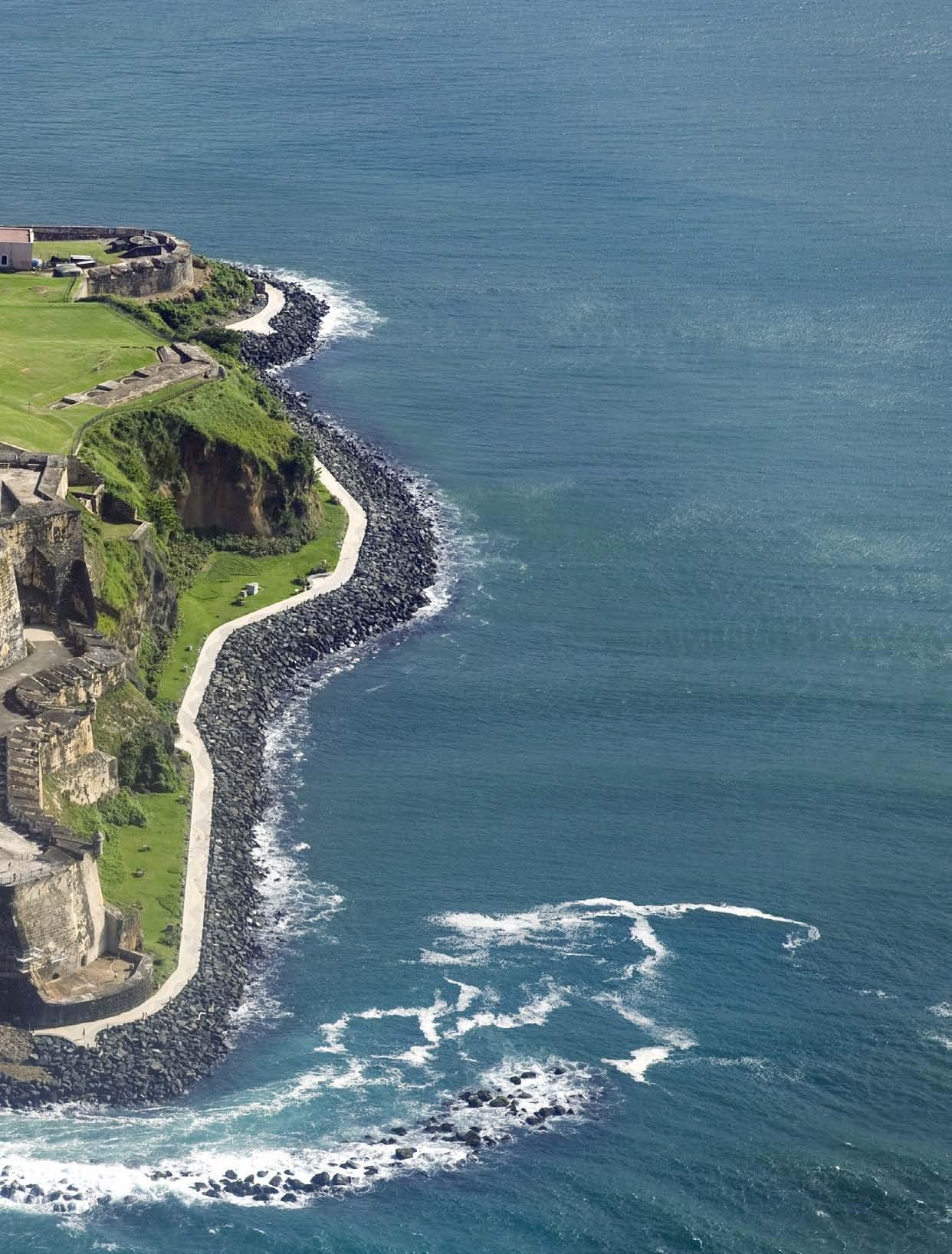
Puerto Rico
year of inscription: 1983
Constructed between the 16th and 20th centuries, you’ll find Italian Renaissance, Baroque, and French architecture in these fortifications. La Fortaleza — translated “The Fortress” and built to defend San Juan’s harbour — may be the oldest mansion of its kind in the Americas, and now serves as the Governor of Puerto Rico’s official residence. The City Wall and three forts — San Felipe del Morro (“El Morro”), San Cristóbal, and San Juan de la Cruz (“El Cañuelo”) — comprise the San Juan National Historic Site. El Morro (pictured) remains a popular landmark, with its museum and barracks, lookouts, cannon, dungeons, guard towers, vaults, and ramps. underground tunnels connect it to Fort San Cristóbal nearby.
43 WWW.CARIBBEAN-AIRLINES.COM
E DDT o R o/ s hu TTER s T o C k. C o M
Pitons Management Area
St Lucia

year of inscription: 2004
Rising dramatically from the sea on the southwest coast — and towering above an accessible caldera known as the Qualibou Depression — the forestclad Pitons (Gros Piton and Petit Piton) are visible from anywhere on St Lucia. Coral reefs cover some 60% of the seabed offshore. The Pitons Management Area is within the Soufriere Volcanic Centre, known for volcanic features like hot springs, explosion craters, pumice and ash deposits, lava flows, and sulphurous fumaroles. What’s more, the legacy of the area’s First Peoples remains through petroglyphs and diverse artefacts.
44 WWW.CARIBBEAN-BEAT.COM

45 WWW.CARIBBEAN-AIRLINES.COM A D v E n T u RE s_o F RIC o/ s hu TTER s T o C k. C o M
university City of Caracas
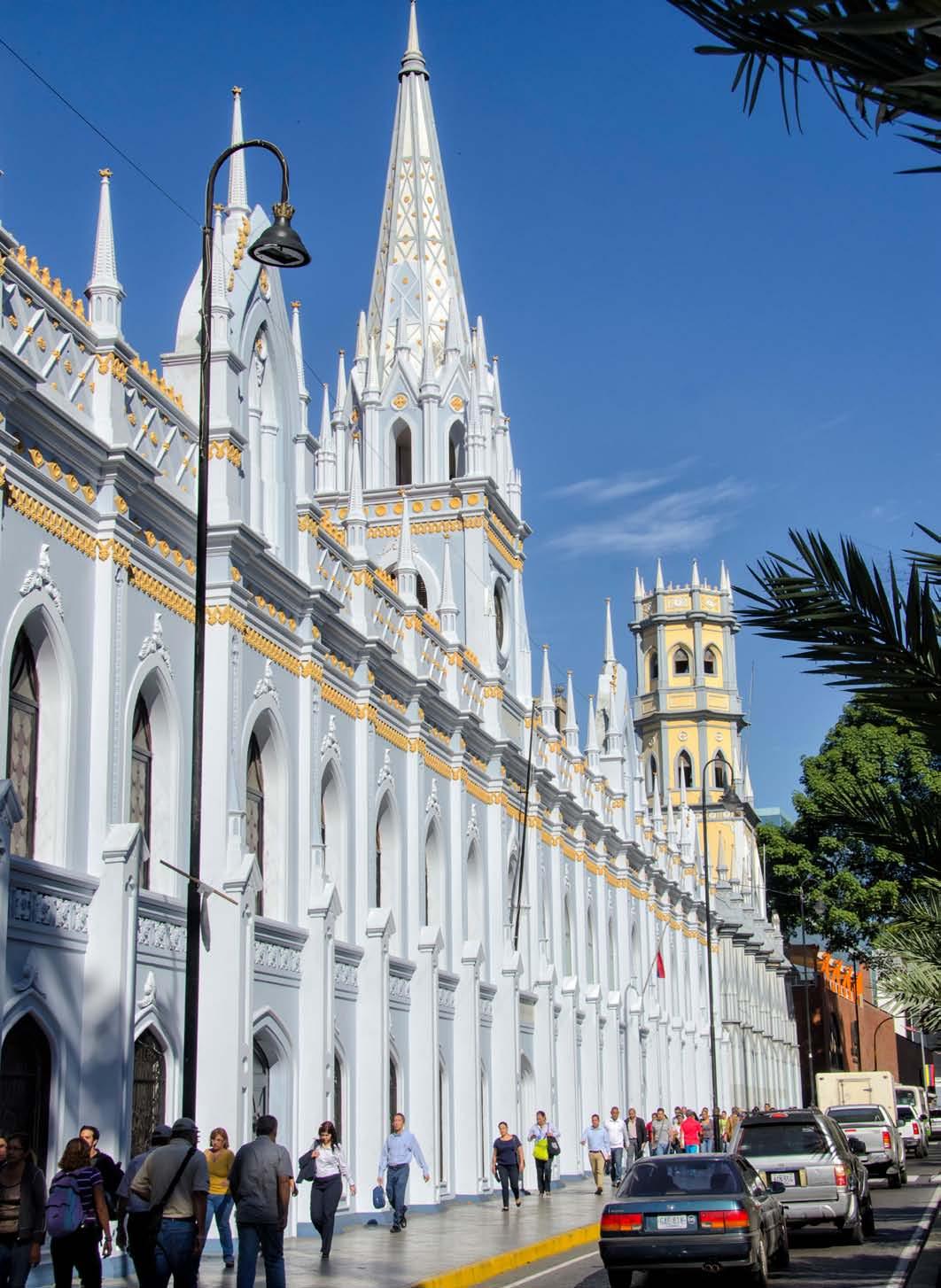
Venezuela
year of inscription: 2000
The university City of Caracas, which includes the Botanical Garden, was designed by architect Carlos Raúl Villanueva and a distinguished group of avantgarde artists between 1940 and 1960. Located in the city centre, it’s the main campus of the Central university of Venezuela and has an open and dynamic arrangement cohesively integrating buildings, art, and nature, demonstrating the technological development and masterpieces of its time — including the Aula Magna auditorium with the “Clouds” of Alexander Calder, the Olympic Stadium, and the Covered Plaza.
46 WWW.CARIBBEAN-BEAT.COM Jimmy v ill A lt A / v W P C s/Al A my s to C k Photo





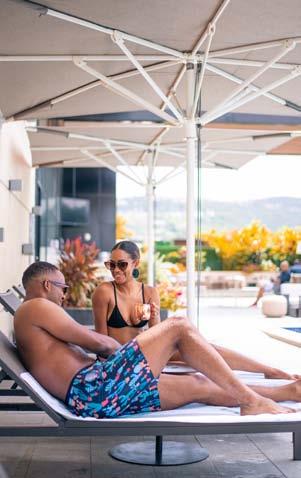





WWW.CARIBBEAN-AIRLINES.COM 47 WHERE SUMMER VIBES BEGIN AC Hotel Kingston, 38-42 Lady Musgrave Road, Kingston 5. BOOK NOW! T. 876.750.3000 sales@achotelsjm.com www.achotelkingston.com Lowlands Mall, Tobago #15 Ariapita Ave, Trinidad Lowlands Mall, Tobago #15 Ariapita Ave, Trinidad 63-TOOLS (86657) 63-TOOLS (86657) 63-TOOLS (86657) EXT 7065 SHOWING ALL SPORTS LIVE OPEN MON–SUN 8AM–8PM OPEN MON–SUN 8AM–8PM TUESDAY TO SUNDAY FROM 4PM TUESDAY TO SUNDAY FROM 4PM OPEN FROM 7AM MON–SUN OPEN FROM 7AM MON–SUN INCLUDING PUBLIC HOLIDAYS INCLUDING PUBLIC HOLIDAYS Lowlands Mall, Tobago Lowlands Mall, Tobago ALL DAY BREAKFAST ALL DAY BREAKFAST BATTERIES FOR CARS, TRUCKS, AND BOATS FROM TT$488 FROM TT$488 • HOUSEHOLD • HARDWARE • AUTO PARTS • PET SUPPLIES • PERSONAL CARE AND MORE! • Now serving Sushi, Sashimi,
Ceviche
Simushi,
Belize Barrier Reef Reserve System
Belize year of inscription: 1996
According to Charles Darwin, this is “the most remarkable reef in the West Indies”. Not only is it the largest reef complex in the Northern Hemisphere, but the second largest reef system in the world, and home to endemic and endangered species. This interconnected system comprises seven marine protected areas along the length
of the barrier reef, the shelf lagoon, and offshore atolls. The incredibly diverse and resilient ecosystem (which includes the main reef and coastal habitats) is able to regenerate itself alongside conservation efforts, helping protect it from climate change impacts like coral bleaching, catastrophic and frequent hurricanes, and rising sea levels.

WWW.CARIBBEAN-BEAT.COM 48 John m C h A els/Al A my s to C k Photo

ANU
St John’s, Antigua MAY/JUN 2023
Near the northern end of the Leeward Islands, Antigua is a frequent hub for Caribbean travel. Our guide to exploring the island when time is tight
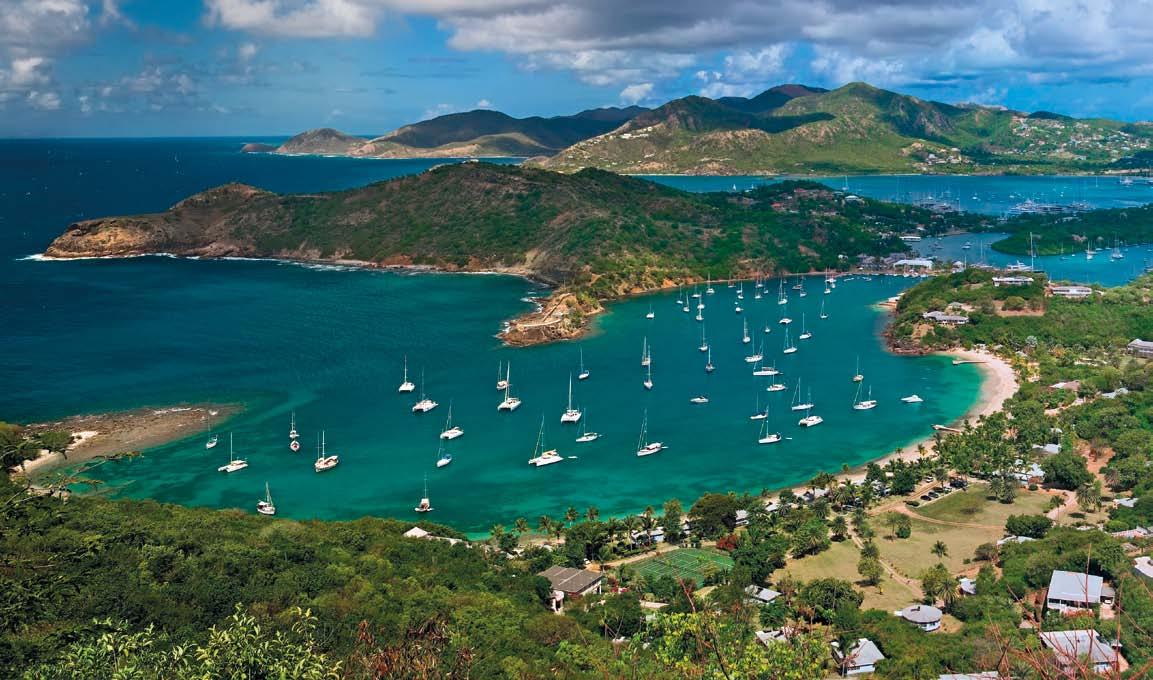

At just over 100 square miles, and famous for its reputed 365 beaches — one for each day of the year — Antigua is both a popular holiday destination, home to some of the Caribbean’s most luxurious resorts, and a common hub for intra-regional travellers. It’s also just small enough for you to get out of the airport on a long layover and enjoy a taste of the landscape and culture, before you board your connecting flight.
A day to spare on a business trip? Head out of St John’s to English Harbour on Antigua’s south coast, and explore a historic site that was once the main Royal Navy base in the West Indies. Alongside the Nelson’s Dockyard Museum buildings, you’ll find a yachting marina, restaurants, and nightspots. Where better to taste the Antiguan rum that once helped Britannia rule the waves?
WWW.CARIBBEAN-BEAT.COM 50 layover L AWRE n CE Ro BERG / shu TTER s T o C k. C o M
eR C B A ke R / shutte R sto C k. C om
History buff? Also within easy reach of the airport are the restored windmills of Betty’s Hope plantation, now run as a museum. The interpretive centre tells the story of the island’s sugar industry, run for centuries using the labour of enslaved Africans. Also in the vicinity: the historic churches of St Peter and St George.
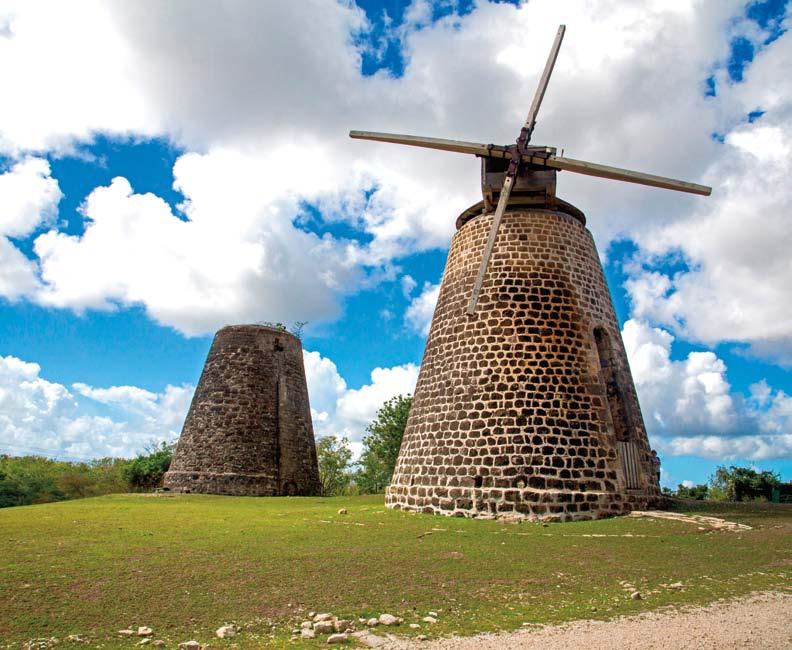
The nice thing about island airports: sometimes there’s a beach practically on the terminal doorstep. Like Dutchman’s Bay, a few minutes’ drive from V.C. Bird International Airport, where the popular Cecilia’s Café offers not just delicious food and drink, but a changing room with showers, where you can slip into and out of your bathing suit. Why spend hours inside the airport when you could be having a swim?
Or, with a whole afternoon to while away, head into the capital, St John’s, and to Redcliffe Quay, where a cluster of historic Georgian buildings on the waterfront have been converted to restaurants and quaint shops offering local goods. Lunch and a spot of shopping? Why not?


A Saturday morning in St John’s before your afternoon flight? Head to Market Street, where Saturday vendors offer everything from famously sweet Antigua black pineapples to homegrown herbs, souvenirs, and tasty street food. It’s a chance to pick up some bargains and some local gossip at the same time.


51 WWW.CARIBBEAN-AIRLINES.COM
A LE ss A n DR o L AI / shu TTER s T o C k. C o M C ou R tesy key PR o P e R ties C ou RTE sy CEC I LIA ’s CAFE A tgi m A ges / s hutte R sto C k. C om
Can your vaCation go green?
Photography by Bearacreative/Shutterstock.com
the Caribbean’s beautiful biodiversity, culture, and heritage are among its strongest draws for travellers and explorers, making tourism a significant proportion of the region’s gross Domestic Product (gDP). according to the Caribbean tourism organisation, over 32 million people came to our shores in 2019, which was a record year that saw more than uS$58 billion injected into the region — roughly 14% of the Caribbean’s overall gDP.
t he following years saw the global pandemic inhibit the sector, which also highlighted how important it is to factor sustainability and resilience into every aspect of our economies.
e ncouraging sustainable tourism is an invaluable way to help protect and preserve the region’s culture and natural environment. While it’s had a growing regional market share in recent years, the pandemic in many respects accelerated its growth, as forward-looking states seek to invest in solutions capable of safeguarding future generations and fostering economic growth through climate-smart choices.
t he Caribbean has a range of solutions and opportunities it is developing to make tourism and its associated industries greener, with plans to have these become the world-leading blueprints and a global standard.
greening the transportation industry is a complex challenge. Major strides have been made in the electric vehicle industry, and everything from personal vehicles, public transport, and micromobility is being transitioned to electric relatively quickly.
However, cross-border transportation via boat and plane remain the outliers. t hese two forms of transport are synonymous with life on islands, and the emissions and environmental impact of air and sea travel are significant.
“We have, to our advantage, short-haul businesses — less than 200 miles, up to 50 miles in some cases between countries,” President of the Caribbean Development Bank Dr Hyginus “gene” Leon said at a Barbados Chamber of Commerce and industry (BCCi) business luncheon in February. “What prevents us from adopting a green technology — battery, hydrogen-powered, vertical take-off and landing that can hop from one country to the next? Why can’t we have fast ferries moving people and goods at the same time at the different points in the islands?”
in novative research into alternative ferry fuels and propulsion is opening doors to the use of large-scale lithium-ion batteries, hybrid ship propulsion, and even hydrogen. in the airline industry, a lot of investment is being made into similar research, with hydrogen showing a lot of promise.
gr een hydrogen is part of the Caribbean future, with plans to unite the region’s renewable energy sources to create a Single e nergy e x port Market
capable of bringing in significant cash flow and reducing reliance on fossil fuels. Combined with smart technology and new innovations, local green hydrogen can lead to the future Dr Leon is envisaging.
the final weeks of 2022 saw a global consensus reached on the protection of biodiversity. a ssembled at the u nited nations (un) Convention on Biological Diversity in Montreal, international delegates representing civil society and national governments came together to adopt a goal of protecting 30% of the world’s natural areas by 2030.
t he 30x30 target has invigorated entrepreneurs keen on developing environmentally-sound activities on land (green) and at sea (blue) that contribute to economic growth. Currently, only 17% of land and 8% of oceans are protected, and most biodiverse areas critical to global ecosystems are found in and around “large ocean states” like those in the greater Caribbean.
t he recent agreement reached at the un in February during negotiations on the Biodiversity Beyond national Jurisdiction (BBnJ) treaty — better known as the “high seas treaty” — will provide a pathway to meeting the 30% goal within marine habitats.
t he BBnJ will equip lawmakers with the ability to create marine protected areas in international waters, and outline frameworks for collaboration in monitoring and protecting these areas. it ’s a major, hard-fought step toward meeting the 30x30 goal.
a c tive conservation and the protection of natural areas as a focal point for economic development is especially viable in countries or regions with a rich, biodiverse environment like the Caribbean. in fact, the Caribbean is perfectly positioned to capitalise on a blue/green economy.
t he region demonstrated its ability to integrate biodiversity goals into our economic growth plans
52 WWW.CARIBBEAN-BEAT.COM
Short answer: yes it can.
Racquel Moses of CCSA shows the way — and why sustainable tourism is so critically important to the Caribbean economically, culturally, and ecologically
green
when we launched and achieved our own independent 20x20 target. a s such, the Caribbean already has several opportunities for sustainable development readily available, especially within the tourism sector.
in t he Bahamas, mangrove planting and coral reef restoration are at the heart of tourism activities at major resorts. in Barbados, holistic ecotourism
Voluntourism opportunities in the Caribbean include hunting lionfish (pterois volitans) — an invasive species in the region

opportunities are offered by W ir re D, while yardie Divers — a dive shop in Jamaica — combines environmental education with scuba diving trips. if you travel to Puerto r ico, you can experience world-class agritourism by learning and participating in traditional crop-to-cup coffee practices, and in gr enada entire “voluntourism” trips are planned for tourists seeking to volunteer their time for sustainable initiatives.
each of these activities highlights the importance of the environment to the communities adjacent to it. t he Caribbean is full of such enriching experiences that place our region’s authentic natural beauty and cultural heritage at the heart of our tourism.
the importance of sustainable tourism cannot be overstated, as the Caribbean Policy research institute’s Dr ishtar govia notes. “the pandemic created an urgent need for more sustainable tourism models, practices, and strategies aimed at improved energy and food security, product diversification, more direct, mutually beneficial linkages with communities and
capacity building at various levels across the sector.”
By future-proofing the tourism and associated sectors through sustainable development, we are also building resilience and providing a better, more personal and meaningful tourism experience to visitors.
t he Caribbean is already trending towards making this the new status quo. Saba maintained its spot among the world’s best ecotourism destinations in 2022, with its government noting that the award recognises future-proofing of the sector.
Likewise, St Lucia has been recognised by the u n e nvironmental Programme for its work in developing sustainable tourism within a blue economy, while the budding ecotourism sectors in St v i ncent and Dominica are also gaining international reputations for high quality experiences.
So, can your Caribbean vacation “go green”? ye s it can, and the region demonstrates that there’s no shortage of ways to do it. n
The Caribbean Climate-Smart Accelerator (CCSA) seeks to establish the Caribbean as the world’s first climate-smart zone, strengthen its readiness and response to disasters, and transform the Caribbean’s economy
Editor’s note: This web article and flip-book version have been updated since its original publication with information about the CSSA, a partner of Island Innovation
53 WWW.CARIBBEAN-AIRLINES.COM
The Caribbean is full of enriching experiences that place our region’s authentic natural beauty and cultural heritage at the heart of our tourism
THE CARIBBEAN CANE AND ABEL
In 1623, Thomas Warner established the first English colonial settlement in the Caribbean in St Kitts. His was a legacy of violence and conflict — with the French, Spanish, and indigenous Kalinago — that would spill over into Antigua and Dominica, and seed a dramatic confrontation between his sons. James Ferguson learns more Photography courtesy British Caribbean Philatelic Group
Connoisseurs of fine cigars may well disagree, but many these days think that tobacco has a lot to answer for — chiefly countless premature deaths and ill-gotten profits. The “witching weed” has also played a not always benign part in various historical events, and one of these was the founding of the first ever English colonial settlement in the Caribbean islands.
As often happens, a key moment in history was brought about by a coincidence of personalities, circumstances and sheer chance — and in this instance, the moment occurred exactly 400 years ago on the beautiful island of St Kitts.
The events that followed encapsulate a great deal of Caribbean colonial history — conquest, war, inter-European rivalry, slavery and resistance. But what adds extra interest to the early days of St Kitts is the family at the centre of the story and a deadly dispute between half-brothers.
It all started with an Englishman named Thomas Warner, born in 1580 into a landowning family in Suffolk, England, and then a captain in the guards of King James I.
Warner seems to have been drawn to the idea of adventures in the “New World”, and in 1620 he accompanied Roger North — a veteran of Sir Walter Raleigh’s expeditions to South America — to the fledgling colony of Oyapoc, in an area of present-day Guyana that was largely Dutch-controlled.
The plan was to cultivate tobacco, which was already booming as a commodity in Europe a century or so after the first adventurers had brought it back across the Atlantic.
It was in Guyana that Warner encountered a Captain Tomas Painton, who suggested that one of the small Caribbean islands would make a better tobacco-growing base than the unstable mainland colony, which was abandoned soon afterwards.
St Christopher (or, more commonly, St Kitts), sighted and named San Cristobal by Christopher Columbus in 1494, had not
since been settled and was ideal agricultural land, said Painton, with abundant water. Its Indigenous name Liamuiga means “fertile island”.
Sometime in 1623 — the records are sketchy — Warner set sail northwards through the archipelago until he reached the west coast of the island, at a place now known as Old Road Town. There his small group established a basic settlement and made contact with the Kalinago, or Carib, chief Tegramund, who seemed friendly.
Warner’s first priority was to seek investment and reinforcements, and almost at once he sailed back to England to attract money and men for his planned colony. By January 1624, he was back on the island with family, settlers, supplies and some interested merchants, and the first permanent English colony was established at Old Road.
From its beginnings, the settlement faced adversity. The first tobacco crop was destroyed by a hurricane. Then French colonists arrived on the island, demanding their own territory, and Warner was forced to agree a treaty dividing the fertile land.
Worse followed when Tegramund, understandably alarmed at the foreign invaders’ activities, planned an attack. The plot was betrayed and the English and French combined forces to massacre the Indigenous population — an event commemorated by a headland called Bloody Point.
Warner’s colony, though plagued by constant conflict with the French and the Spanish (who briefly invaded in 1629) was considered a success in England. He was knighted, and made Governor of St Kitts and Lieutenant General of “the Caribee Islands”.
The number of settlers grew so rapidly that Warner sent colonists to Nevis, Antigua and Montserrat to establish new
54 WWW.CARIBBEAN-BEAT.COM
on this day
settlements. The influx of new arrivals continued to be a problem, as there was insufficient land, and unrest grew among those who had been promised a fortune in the Caribbean.
Protests were violently put down by Governor Warner, who at the same time introduced slavery to the island, importing thousands of Africans to work on tobacco and labour-intensive sugar plantations.
By the time of his death in March 1649, Sir Thomas Warner was a powerful and wealthy man, worth the equivalent today of £100 million. His legacy was formidable: he had created the first viable English colony in the Caribbean and had navigated 35 years of war and political scheming.

He had also instigated some of the worst aspects of colonial rule, which were to spread across the region: the destruction of Indigenous culture, the imposition of slavery, and the creation of a plantation economy.
His tomb can be seen at St Thomas Anglican Church in Middle Island, not far from where he first set foot on St Kitts, and his name lives on most conspicuously in the Warner Park Sporting Complex in the capital, Basseterre. Its origins date back to 1923, when the colonial authorities decided to commemorate the 300th anniversary of the English arrival with a public park.
But the Warner family’s influence persisted in other ways, not least in a strange and tragic rivalry between two of Sir Thomas’ sons. Sir Thomas was married three times and had a daughter and three sons within these marriages.
Edward was born in 1609 and became the first Governor of Antigua in 1632; Thomas died in 1679 and not much is known about him; and Philip was born in 1612 and was appointed Governor of Antigua, 40 years after his brother Edward, in 1672.
And then there was a fourth son, confusingly also named Thomas, but better known as “Indian” Warner. He had been born out of wedlock in 1630 to a Kalinago woman, apparently from Dominica, and was brought up within the Warner family. When his father died, he faced ostracism as the illegitimate sibling, was treated as a slave, and fled St Kitts to Dominica.
How Indian Warner “escaped to his Carib countrymen in Dominica” (Dictionary of National Biography) is unclear, but he was apparently made welcome in an island where the Kalinago people were still dominant. Rising to a position of leadership, he cleverly took advantage of English-French rivalry and led expeditions against both colonial contenders.
The English described him as “chief Indian governor” of Dominica, and an uneasy truce existed until in 1674 when a force left Antigua, determined to put an end to the raiding parties and kidnappings allegedly carried out by Kalinago from Dominica. The 100-strong party was led by Governor Philip Warner, half-brother of Indian Warner.
The Antiguan colonists at first joined forces with Indian Warner’s community against an enemy Kalinago group and slaughtered them. Then, according to the distinguished writer Marina Warner, a descendant of Sir Thomas Warner:
“The two brothers met on board ship — Philip’s — under a flag of truce, but “Indian” and all those with him died in the subsequent conflict, some witnesses claiming they had been intoxicated on purpose by Philip and then murdered in cold blood.”
Legend has it that Philip, in an act of fratricide, sought out and killed his brother.
It was a Caribbean Cain and Abel drama. But, unlike his biblical counterpart, Philip Warner escaped punishment and lived on until 1689. The Kalinago would face further bloodshed, while St Kitts would abandon tobacco for sugar, and sugar for tourism. n

55 WWW.CARIBBEAN-AIRLINES.COM
Fifty years ago, these stamps were issued to commemorate the 350th anniversary of sir thomas Warner’s arrival
Caribbean Crossword
Across
1 Variety of flora and fauna [12]
6 Antagonist [7]
7 Having ascended [7]
9 Disorderly crowd [9]
10 Related to hearing [5]
11 Full of sass [6]
12 Government department [8]
14 The birds of a region [8]
15 Zane Maloney [6]
18 Time of power [5]
19 Runs out of inventory [9]
20 Intrinsic nature, or extract [7]
21 “Mere” humans [7]
22 Hopes for the future [12]
down
1 Flower, bloom [7]
2 Favourable circumstances [13]
3 Q-tip’s target [6]
4 Vacation keepsake [8]
5 _______ challenged (unable to sing well, jokingly) [7]
8 The Pitons, type of volcano [13]
13 A gene which can transform a cell into a tumour cell [8]
14 Person with nothing between the ears [7]
16 Doesn’t accept [7]
17 Protective headgear [6]
spot the Difference by gregory st Bernard there are 11 differences between these two pictures. how many can you spot?
spot the Difference answers
Colours of background mural are different; “Chocolate” text is changed to “Cocoalate”; cocoa pod wearing shades has bigger sachet; yellow cocoa pod is missing a chocolate bar; aisok is missing his headband; aisok has a different pendant (changed from “C” to ”);k“ aiso’sk eyes are repositioned; rows of cocoa pods are swapped; red cocoa pod’s colouring is inverted; red cocoa pod now has a bag; orange cocoa pod is repositioned.
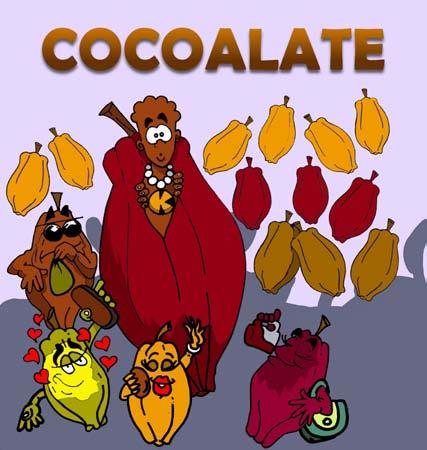

56 WWW.CARIBBEAN-BEAT.COM
1 2 3 4 5 6 7 8 9 10 11 12 13 14 15 16 17 18 19 20 21 22
puzzles
by www.sudoku-puzzle.net
Fill the empty square with numbers from 1 to 9 so that each row, each column, and each 3x3 box contains all of the numbers from 1 to 9. For the mini sudoku use numbers from 1 to 6.
If the puzzle you want to do has already been filled in, just ask your flight attendant for a new copy of the magazine!
57 WWW.CARIBBEAN-AIRLINES.COM S N O I T U B I R T N O C O C H A M R L A N G U A G E S B H P W P A G R I T O U R I S M A Y P A R O H P A T E M T S U M L F P C T L A G O O N E D M P G R I H N S I H C E I I L O I O A A I E T J T M C T D L T O R T M T M L R N E O I Y D O N T R E E E U I P R R M H T R S E I N C L A S I B A A R E S H P C T T T V U Y T J O T C P I D I O U T M H H F F K T U O P R D D R E T A L O C O H C R U A E R E S P L E N D E N T T E N O I T A R E L E C C A Y O T
search chocolate championship literature edutainment languages Papiamento metaphor polymath resplendent settlement fratricide motorsport contributions acceleration petroglyphs architecture fort vaults auditorium lagoon species hybrid agritourism easy 6x6 mini sudoku puzzle very easy 9x9 sudoku puzzle WWW .sudokuP u ZZ le.net Caribbean Beat Magazine Sudoku 9x9 - Puzzle 1 of 5 - Very Easy 5 2 7 1 4 7 9 3 8 6 9 2 4 9 2 7 8 6 5 4 7 3 1 5 1 8 5 4 6 9 8 5 2 1 8 3 www.sudoku-puzzles.net Caribbean Beat Magazine Sudoku 6x6 - Puzzle 4 of 5 - Easy 2 5 6 5 4 1 6 4 www.sudoku-puzzles.net sudoku solutions Word search sudoku mini sudoku Caribbean Crossword Caribbean Beat Magazine Sudoku 9x9 - Solution 1 of 5 - Very Easy 6 9 5 2 3 7 1 4 8 2 4 7 9 8 1 5 3 6 8 1 3 5 6 4 7 9 2 4 5 1 8 9 3 6 2 7 9 2 8 6 7 5 4 1 3 7 3 6 4 1 2 9 8 5 1 8 9 3 5 6 2 7 4 3 6 4 7 2 9 8 5 1 5 7 2 1 4 8 3 6 9 www.sudoku-puzzles.net Caribbean Beat Magazine Sudoku 6x6 - Solution 4 of 5 - Easy 3 4 1 2 5 6 5 2 6 4 1 3 1 5 4 3 6 2 6 3 2 5 4 1 2 1 5 6 3 4 4 6 3 1 2 5 www.sudoku-puzzles.net B 1 I O 2 D I V E 3 R S 4 I T Y T 5 L P A O O O 6 P P O S E R U 7 P R I S 8 E N S O W V T A S 9 C R U M M A G E A 10 U R A L O T X N A L M 11 O U T H Y M 12 I N I S T R Y N O 13 R O A 14 V I F A U N A D 15 R I V E R 16 I T C H 17 O E R 18 E I G N O 19 V E R S E L L S H E G L C I E 20 S S E N C E M 21 O R T A L S A N E N T D E 22 X P E C T A T I O N S S N O I T U B I R T N O C O C H A M R L A N G U A G E S B H P W P A G R I T O U R I S M A Y P A R O H P A T E M T S U M L F P C T L A G O O N E D M P G R I H N S I H C E I I L O I O A A I E T J T M C T D L T O R T M T M L R N E O I Y D O N T R E E E U I P R R M H T R S E I N C L A S I B A A R E S H P C T T T V U Y T J O T C P I D I O U T M H H F F K T U O P R D D R E T A L O C O H C R U A E R E S P L E N D E N T T E N O I T A R E L E C C A Y O T
Word






The NEW way to be entertained!
Use your personal device to stream Blockbuster movies, TV shows, games and more Caribbean content while in the air
Boeing 737-NG – Download the Caribbean Airlines Mobile App via Google Play Store or Apple Play Store
Steps
1. Ensure your device is in Airplane Mode
2. Connect to the WiFi network (Caribbean View)
3. Launch the Caribbean Airlines Mobile App and click Caribbean View within the main menu


Boeing 737-8 – Utilise the seat back screens and handset in Business Class or wirelessly navigate to www view-caribbean.com or www.caribbeanview.com and wireless stream through your device browser
Steps
1. Ensure your device is in airplane mode


2. Connect to the WiFi network (Caribbean View)

3. Launch a browser (chrome or safari) and navigate to www view-caribbean.com or www.caribbeanview.com

Troubleshooting
Unable to connect
1. Switch Wi-Fi off and on
2. Power the device off and on and repeat step 1
Unable to view content
1. Close and restart the browser and type www.caribbean-airlines.com
2. If this does not work, try an alternate browser and type in www.caribbean-airlines.com
3. Power the device off and on and try steps 1 and 2 again
Note: Chrome is the recommended browser for laptops.
Terms and Conditions
By using the system, you accept the following terms and conditions:
• *Content is available only on flights over two hours.
• Content is available only during flight.
• Access to content is only available above 10,000 feet.
• Access to content will stop before the end of the flight
• You may not have sufficient time during the flight to watch the entirety of some content.
Viewing information:
Please choose your viewing appropriately Note: Some content may not be suitable for younger viewers so please choose appropriate content where children will be watching
Please ensure headphones are used at all times for playback of media content, unless muted.
Download
Download our free Caribbean Airlines Mobile App before Charge

Before board ing, ensure your device is fully charged
Headphones
Bring your personal headphones to enjoy our selection of entertainment
• It may take a short time for a video or other content to start.
• Please note that we are not responsible for any data loss or damage to devices that may occur while/after using our services.
• Onboard battery charging facilities are not available.
Safety information:
• We may pause or stop our inflight entertainment system for safety or other reasons.
Security information:
• This service is provided using wireless LAN technology Please be aware that it is a public network.
• It is each user’s responsibility to have an up-to-date security system (e.g. firewall, anti-virus, anti-malware) for their device.
W IR E L ESS I NF LI G H T ENTE RTAI NMEN T
is available only on selected flights*
Welcome to Content
In preparation for Enjoy free entertainment on
GRAND CAYMAN
Dominica
Curacao
Ogle
Ft. Lauderdale
Macaroni pie and stewed chicken! Out in the wilds of New Jersey, I hadn’t had any for so long. All that cholesterol-laden goodness. I could taste it in my mouth. The problem was, I’d never actually made macaroni pie myself. And there was no one around to make it for me.
I’d tasted plenty of macaroni pies in my time, and the best of them all was my Tantie’s. No contest. So I emailed her in Trinidad. She sent me a generations-old recipe, which looked straightforward enough: how many eggs, how much butter, how many packs of evaporated milk, etc. So far so good. But it also said:
1/2 glass regular milk
Cheese (generous amount)
Dammit, I’m not a cordon bleu chef. What size glass of milk are we talking about here? I’ve got four sizes of glasses in my cupboard. And “regular” milk — would that be skimmed, semi-skimmed, full cream, low fat, half and half? And exactly how much cheese is considered generous?
I should have just asked Tantie what she meant. But I was going through one of those nostalgic, homesick periods which involve an unbearable craving for familiar and comforting food, such as a large macaroni pie. This was no time for further clarifications. This was the time for action.

u S supermarkets don’t usually sell the long, fat macaroni that you can get in Trinidad. A friend suggested using ziti, but I remembered my Tantie sometimes used
HOLY MACARONI
A
classic Last Word from the magazine archive, first published in our September 2006 issue:
elbow macaroni. That I could find. But the next complication was that I was on a diet. I was choosing “healthy” alternatives in all my cooking. I’d been weaning myself off refined carbohydrates, going only for fat-free, lactose-free dairy, and choosing the least fatty cheeses I could find. Should this be a problem, I wondered? Caribbean food is usually a hodge-podge of different styles, so I thought, why not throw some healthy hodge into the podge?
I bought enriched whole wheat elbow pasta, fat-free, lactose-free milk, and non-fat Swiss cheese. Somebody had told me that Swiss was the healthiest kind of cheese, and I actually believed them. But I didn’t have a cheese grater, and I had bought a block of cheese rather than the pre-grated variety. So I had to use a knife to cut little slivers of cheese to mix into my pie. I will not describe how timeconsuming and futile this proved to be. It’s interesting how imbecilic you can become when you are in a hurry. Sunday lunch was approaching, and I was totally determined to eat a macaroni pie, come what might.
I threw my whole-wheat-Swiss-cheeselactose-free pie into its nice baking dish, to be birthed by a 425-degree baking oven, as prescribed. I could taste the pie in my mouth already, especially as I had already finished stewing the chicken, which had come out marvellously. Well, thank goodness for small mercies.
My pie was a disaster. It was flat. Oily. Bland. The whole wheat pasta tasted disgusting. My roommates liked it, but they didn’t know any better. They weren’t Trinis. They
had no idea of the savoury carbohydrate heaven that is a good macaroni pie. One of them even kept calling it macaroni cake. Their approval somehow made me feel more miserable than ever. I dabbed my pie with paper towels, I put it back in the oven, I adorned it with ketchup. But nothing could soothe my disappointment, let alone assuage my hunger.
I rang a Trini friend in Massachusetts. What had gone wrong, I asked? I listed each ingredient, from cheese through pasta. When I had finished, she let out a horrified “Oh gyaaaaaad!”
I begged for counsel. What sort of cheese should I have used?
“Old fashioned rat cheese, girl — cheddar!”
What about the whole wheat pasta?
An ominous pause. “Try it with the cheddar and see if you could take it,” she suggested, reluctantly I thought.
Eventually, I went right to the source. Later that evening, when I had scraped the remains of my pie into the garbage, I phoned my Tantie and interrogated her. “Regular” milk, it seems, was skimmed milk. “Cheese” was cheddar cheese. A “generous” amount was as much as could be packed in with the other ingredients. She too thought I might not absolutely kill myself if I tried again with the whole wheat pasta.
I cooked another pie, this time with the approved ingredients. It came out wondrously. My roommate still called it macaroni cake, but at least now it tasted authentic. Mostly. The whole wheat pasta was still a little rugged, shall we say — but success is relative.
It tasted almost like home. n
64 WWW.CARIBBEAN-BEAT.COM
tA ti A n A B RA lnin A / s hutte R sto C k. C om
Caroline Taylor gets homesick for her Tantie’s macaroni pie. So she tries to cook it herself.
classic
Trouble now start …



























































 Reviews by nigel A Campbell
Reviews by nigel A Campbell




 Reviews by shivanee Ramlochan, Book Review Editor
Reviews by shivanee Ramlochan, Book Review Editor
 by Kevin Jared Hosein (Bloomsbury, 352 pp,
by Kevin Jared Hosein (Bloomsbury, 352 pp,


























































































